#One of the core parts of Bit Loop is its recommendation system
Explore tagged Tumblr posts
Text
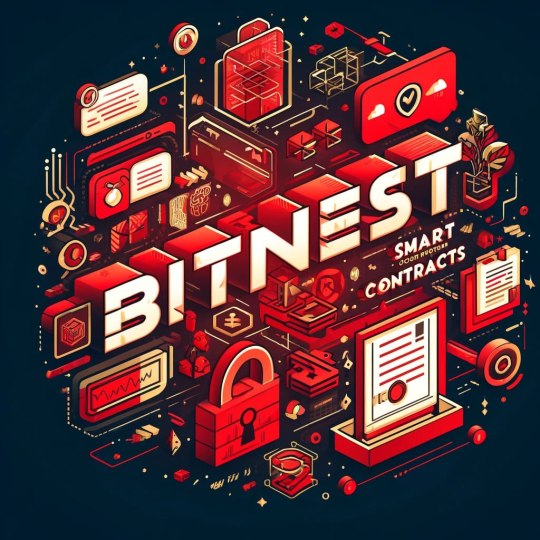
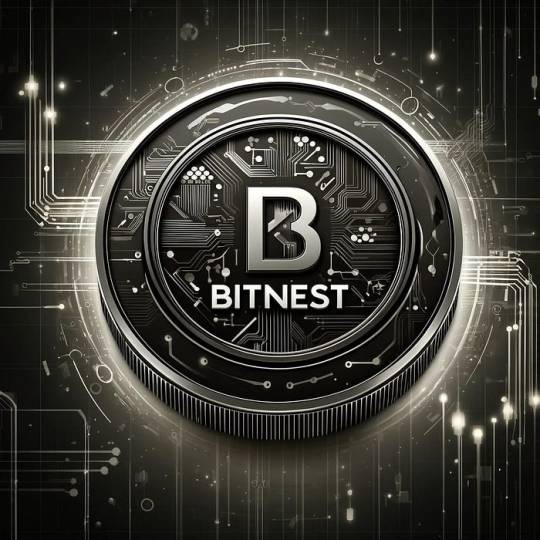
In the current rapidly evolving digital currency market, decentralized finance (DeFi) platforms are redefining the shape of financial services with their unique advantages. Bit Loop, as a leading decentralized lending platform, not only provides a safe and transparent lending environment, but also opens up new passive income channels for users through its innovative sharing reward system.
Personal links and permanent ties: Create a stable revenue stream One of the core parts of Bit Loop is its recommendation system, which allows any user to generate a unique sharing link when they join the platform. This link is not only a “key” for users to join the Bit Loop, but also a tool for them to establish an offline network. It is worth noting that offline partners who join through this link are permanently tied to the recommender, ensuring that the sharer can continue to receive rewards from the offline partner’s activities.
Unalterable referral relationships: Ensure fairness and transparency A significant advantage of blockchain technology is the immutability of its data. In Bit Loop, this means that once a referral link and live partnership is established, the relationship is fixed and cannot be changed. This design not only protects the interests of recommenders, but also brings a stable user base and activity to the platform, while ensuring the fairness and transparency of transactions.
Automatically distribute rewards: Simplify the revenue process Another highlight of the Bit Loop platform is the ability for smart contracts to automatically distribute rewards. When the partner completes the circulation cycle, such as investment returns or loan payments, the smart contract automatically calculates and sends the corresponding percentage of rewards directly to the recommender’s wallet. This automatic reward distribution mechanism not only simplifies the process of receiving benefits, but also greatly improves the efficiency of capital circulation.
Privacy protection and security: A security barrier for funds All transactions and money flows are carried out on the blockchain, guaranteeing transparency and traceability of every operation. In addition, the use of smart contracts significantly reduces the risk of fraud and misoperation, providing a solid security barrier for user funds. Users can confidently invest and promote boldly, and enjoy the various conveniences brought by decentralized finance.
conclusion As decentralized finance continues to evolve, Bit Loop offers a new economic model through its unique recommendation system that enables users to enjoy highly secure and transparent financial services while also earning passive income by building and maintaining a personal network. Whether for investors seeking stable passive income or innovators looking to explore new financial possibilities through blockchain technology, Bit Loop provides a platform not to be missed.
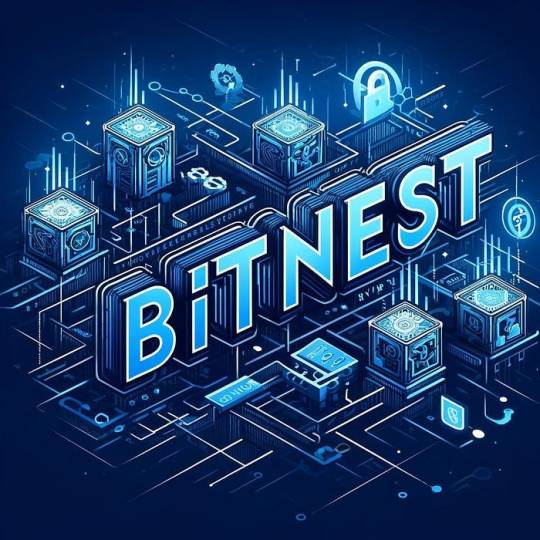
#In the current rapidly evolving digital currency market#decentralized finance (DeFi) platforms are redefining the shape of financial services with their unique advantages. Bit Loop#as a leading decentralized lending platform#not only provides a safe and transparent lending environment#but also opens up new passive income channels for users through its innovative sharing reward system.#Personal links and permanent ties: Create a stable revenue stream#One of the core parts of Bit Loop is its recommendation system#which allows any user to generate a unique sharing link when they join the platform. This link is not only a “key” for users to join the Bi#but also a tool for them to establish an offline network. It is worth noting that offline partners who join through this link are permanent#ensuring that the sharer can continue to receive rewards from the offline partner’s activities.#Unalterable referral relationships: Ensure fairness and transparency#A significant advantage of blockchain technology is the immutability of its data. In Bit Loop#this means that once a referral link and live partnership is established#the relationship is fixed and cannot be changed. This design not only protects the interests of recommenders#but also brings a stable user base and activity to the platform#while ensuring the fairness and transparency of transactions.#Automatically distribute rewards: Simplify the revenue process#Another highlight of the Bit Loop platform is the ability for smart contracts to automatically distribute rewards. When the partner complet#such as investment returns or loan payments#the smart contract automatically calculates and sends the corresponding percentage of rewards directly to the recommender’s wallet. This au#but also greatly improves the efficiency of capital circulation.#Privacy protection and security: A security barrier for funds#All transactions and money flows are carried out on the blockchain#guaranteeing transparency and traceability of every operation. In addition#the use of smart contracts significantly reduces the risk of fraud and misoperation#providing a solid security barrier for user funds. Users can confidently invest and promote boldly#and enjoy the various conveniences brought by decentralized finance.#conclusion#As decentralized finance continues to evolve#Bit Loop offers a new economic model through its unique recommendation system that enables users to enjoy highly secure and transparent fin
1 note
·
View note
Text
Explore the Bit Loop: The innovation of lending powered by blockchain technology
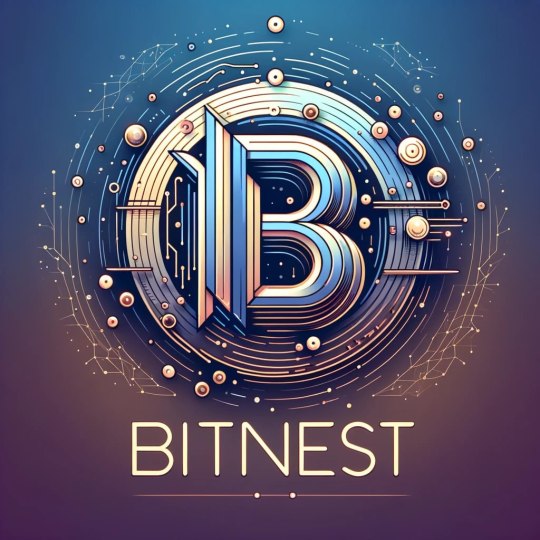
In the rapid development of financial technology, blockchain technology has become one of the powerful tools to reform traditional financial services. Bit Loop, a decentralized lending platform based on the Ethereum network, is using blockchain's smart contract technology to reshape the lending market. This article will explore in detail how Bit Loop works, its monetization model, security measures, and its unique sharing reward mechanism.
The core function and operation of Bit Loop Smart contract applications: The core operation of Bit Loop relies on smart contract technology, which is deployed on the Ethereum (EVM compatible) network and automatically executes all the terms of the lending agreement. Through smart contracts, Bit Loop enables automatic matching between borrowers and lenders, optimizes the liquidity of funds, and reduces transaction costs.
Decentralized lending model: The borrowing and lending process is fully decentralized on the Bit Loop, i.e. all transactions are conducted directly between users without the need for any intermediaries. This not only increases the transparency of the transaction, but also greatly reduces the potential risk of fraud and operating expenses.
Peer-to-peer trading system: Through the peer-to-peer flow of funds, users can send funds directly from one person's wallet to another person's wallet, ensuring the security and speed of transactions. This model provides users with more flexible and affordable borrowing options by reducing the intervention of traditional financial institutions.
The profit model of Bit Loop Capital supply dividend: Bit Loop may collect a percentage of the money supply from the borrower as a service fee. For example, a borrower may have to pay a 1.5% fee to obtain short-term funding, part of which goes to cover the platform's operating costs and part goes to the lender's income.
Interest income: Lenders earn interest income by lending money to borrowers. These interest rates are usually determined by market supply and demand, and are automatically calculated and allocated through the platform's smart contracts.
Security measure Multi-signature and anonymous supervisory node: Bit Loop uses multi-signature technology and generated anonymous supervisory nodes to ensure the security of transactions. These technologies can effectively prevent unauthorized access and potential fraud, while enhancing the overall security of the system.
Irreversibility of smart contracts: Smart contracts deployed on the blockchain, once launched, cannot be modified or revoked. This ensures fair and transparent operation of the platform, and even the developers of the platform cannot change the terms of the contract.
Sharing reward mechanism Bit Loop encourages users to invite new users to join the platform through a personal sharing link. When these new users register and participate in the lending activity using the share link, the recommender will be rewarded according to the smart contract Settings. This mechanism not only increases the user base of the platform, but also provides an additional revenue stream for existing users.
conclusion By applying the concept of decentralization to the lending market, Bit Loop provides users with a secure, transparent and efficient financial services platform. This blockchain-based lending platform not only reduces the complexity and cost of traditional banking services, but also provides more equitable and accessible financial services to users around the world. With the advancement of technology and the development of the market, Bit Loop is expected to become a leader in the field of fintech, further promoting the modernization and globalization of financial services.
#BitNest#BitNestLoop#BitNestPureContract#BitNestis the best project in the currency circle#BitNestSecurely#BitNestAutonomously#BitNestDecentralizedly#BitNestCryptographically
2 notes
·
View notes
Text
Explore the Bit Loop: The innovation of lending powered by blockchain technology
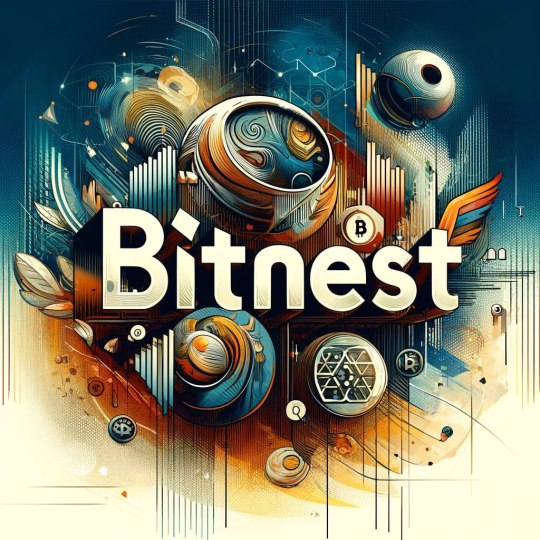
In the rapid development of financial technology, blockchain technology has become one of the powerful tools to reform traditional financial services. Bit Loop, a decentralized lending platform based on the Ethereum network, is using blockchain's smart contract technology to reshape the lending market. This article will explore in detail how Bit Loop works, its monetization model, security measures, and its unique sharing reward mechanism.
The core function and operation of Bit Loop Smart contract applications: The core operation of Bit Loop relies on smart contract technology, which is deployed on the Ethereum (EVM compatible) network and automatically executes all the terms of the lending agreement. Through smart contracts, Bit Loop enables automatic matching between borrowers and lenders, optimizes the liquidity of funds, and reduces transaction costs.
Decentralized lending model: The borrowing and lending process is fully decentralized on the Bit Loop, i.e. all transactions are conducted directly between users without the need for any intermediaries. This not only increases the transparency of the transaction, but also greatly reduces the potential risk of fraud and operating expenses.
Peer-to-peer trading system: Through the peer-to-peer flow of funds, users can send funds directly from one person's wallet to another person's wallet, ensuring the security and speed of transactions. This model provides users with more flexible and affordable borrowing options by reducing the intervention of traditional financial institutions.
The profit model of Bit Loop Capital supply dividend: Bit Loop may collect a percentage of the money supply from the borrower as a service fee. For example, a borrower may have to pay a 1.5% fee to obtain short-term funding, part of which goes to cover the platform's operating costs and part goes to the lender's income.
Interest income: Lenders earn interest income by lending money to borrowers. These interest rates are usually determined by market supply and demand, and are automatically calculated and allocated through the platform's smart contracts.
Security measure Multi-signature and anonymous supervisory node: Bit Loop uses multi-signature technology and generated anonymous supervisory nodes to ensure the security of transactions. These technologies can effectively prevent unauthorized access and potential fraud, while enhancing the overall security of the system.
Irreversibility of smart contracts: Smart contracts deployed on the blockchain, once launched, cannot be modified or revoked. This ensures fair and transparent operation of the platform, and even the developers of the platform cannot change the terms of the contract.
Sharing reward mechanism Bit Loop encourages users to invite new users to join the platform through a personal sharing link. When these new users register and participate in the lending activity using the share link, the recommender will be rewarded according to the smart contract Settings. This mechanism not only increases the user base of the platform, but also provides an additional revenue stream for existing users.
conclusion By applying the concept of decentralization to the lending market, Bit Loop provides users with a secure, transparent and efficient financial services platform. This blockchain-based lending platform not only reduces the complexity and cost of traditional banking services, but also provides more equitable and accessible financial services to users around the world. With the advancement of technology and the development of the market, Bit Loop is expected to become a leader in the field of fintech, further promoting the modernization and globalization of financial services.
#BitNest#BitNestLoop#BitNestPureContract#BitNestis the best project in the currency circle#BitNestSecurely#BitNestAutonomously#BitNestDecentralizedly#BitNestCryptographically
3 notes
·
View notes
Text

Beyblade Evolution (2013)
I've been going back to some Beyblade games I never played before, and would you look at that, I even finished some of them. In this case, Evolution is fairly short.
In paper, this game should be really cool. There isn't much of that interactive, anime-like factor of ordering your spinning top around like it's a pokemon. Instead, it's more of a straightforward simulator, using the 3DS's gyro functions to simulate how you'd launch a beyblade in real life. After that, you get a tiny bit of interactivity via the ability to give your bey a brief boost at the right time, but nothing else.
A relatively realistic simulation of the real life game is an interesting idea, but the execution isn't fantastic. Since it's a videogame, it lacks the unpredictability of real spinning tops under the effects of real life physics, and you very quickly realize the lack of gameplay variety. They even tried adding a bunch of minigames to spice things up, but they're seriously uninspired and feel like a complete chore.
However, the actual fatal flaw, despite all this, is the game's story structure. First of all, the story is borderline non existent. Second, you get a persona-like limit to how many things you can do before the next tournament comes around, meaning you're always racing to earn enough money to buy new parts. Oh, speaking of buying new parts, does the idea of a lot of them being locked behind a gacha system sound nice? And even then, after you go through the effort of obtaining all these beyblade parts to get through the game, and you think the next playthrough on new game + will be less bothersome, you find out neither your parts nor your money carry over. You only get a tiny boost to the money you earn, so you're expected to play through the same story loop many times.
Quite frankly this whole thing is a mess, I fail to understand why they'd make so many unfun decisions. It's a neat game as a novelty for a short amount of time, but it fails spectacularly as a complete product.
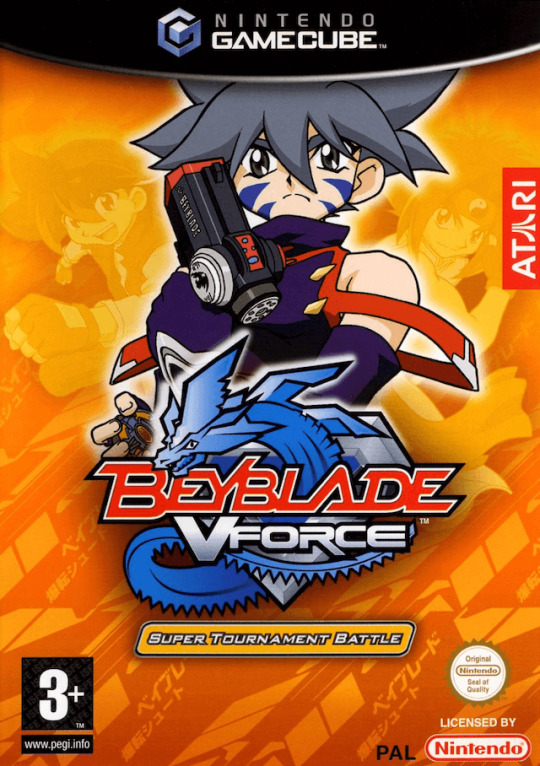
Beyblade V-Force: Super Tournament Battle (2002)
With this one, we get a game that's very much opposite to what Evolution was trying to do. Having played the original Playstation game from 2001, I can tell you this is pretty much a straight sequel with very similar gameplay and improved graphics.
The gameplay loop is extremely simple. Fight battles, earn cash, unlock new parts and buy them. Build stronger beyblades and repeat the process until the end. The game itself, again, barely has any story to it. But unlike its 3DS younger brother, Super Tournament Battle has a very interactive battle system, with player-controlled movement, special moves, and therefore, more real time strategy.
The core appeal to this entry in the series is that the battles are dynamic and fun. There's a clear variety in strategies, as you can aim to knock opponents out of the stadium with well-timed attacks, out-spin them by stalling their offense, or even finish the fight by default by breaking your opponent's beyblade, if yours can deal enough damage. That last one is a nice bit of flavor you'd mostly see in the anime and not in real life (though later beyblade generations would introduce "bursting" as a legal win condition, for those not in the know, it wasn't the case for a long time).
I do like it quite a bit, in case it wasn't obvious enough. It's tough to recommend it to anyone who isn't interested in the first generation of beyblade, and it might not be worth whatever price it goes for. But at its heart, when the tops are spinning and clashing, it's ultimately fun. Timing your special move right when your opponent is close to the edge to push them out, only for them to use theirs to dash back in, that stuff doesn't get old.
0 notes
Text
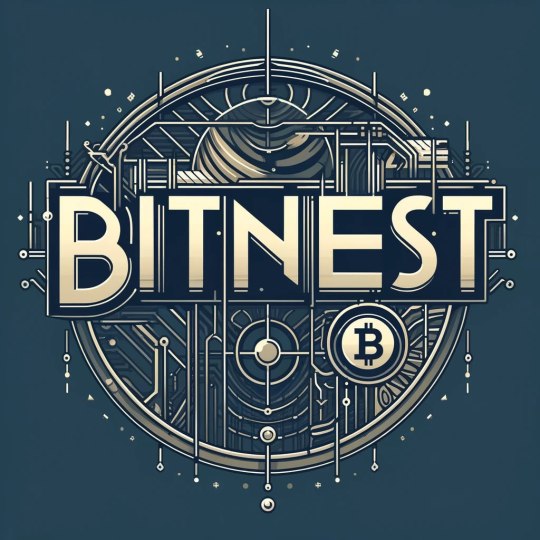
In the current rapidly evolving digital currency market, decentralized finance (DeFi) platforms are redefining the shape of financial services with their unique advantages. Bit Loop, as a leading decentralized lending platform, not only provides a safe and transparent lending environment, but also opens up new passive income channels for users through its innovative sharing reward system.
Personal links and permanent ties: Create a stable revenue stream One of the core parts of Bit Loop is its recommendation system, which allows any user to generate a unique sharing link when they join the platform. This link is not only a “key” for users to join the Bit Loop, but also a tool for them to establish an offline network. It is worth noting that offline partners who join through this link are permanently tied to the recommender, ensuring that the sharer can continue to receive rewards from the offline partner’s activities.
Unalterable referral relationships: Ensure fairness and transparency A significant advantage of blockchain technology is the immutability of its data. In Bit Loop, this means that once a referral link and live partnership is established, the relationship is fixed and cannot be changed. This design not only protects the interests of recommenders, but also brings a stable user base and activity to the platform, while ensuring the fairness and transparency of transactions.
Automatically distribute rewards: Simplify the revenue process Another highlight of the Bit Loop platform is the ability for smart contracts to automatically distribute rewards. When the partner completes the circulation cycle, such as investment returns or loan payments, the smart contract automatically calculates and sends the corresponding percentage of rewards directly to the recommender’s wallet. This automatic reward distribution mechanism not only simplifies the process of receiving benefits, but also greatly improves the efficiency of capital circulation.
Privacy protection and security: A security barrier for funds All transactions and money flows are carried out on the blockchain, guaranteeing transparency and traceability of every operation. In addition, the use of smart contracts significantly reduces the risk of fraud and misoperation, providing a solid security barrier for user funds. Users can confidently invest and promote boldly, and enjoy the various conveniences brought by decentralized finance.
conclusion As decentralized finance continues to evolve, Bit Loop offers a new economic model through its unique recommendation system that enables users to enjoy highly secure and transparent financial services while also earning passive income by building and maintaining a personal network. Whether for investors seeking stable passive income or innovators looking to explore new financial possibilities through blockchain technology, Bit Loop provides a platform not to be missed.
Call:@Qnm168 (Telegram)
1 note
·
View note
Text
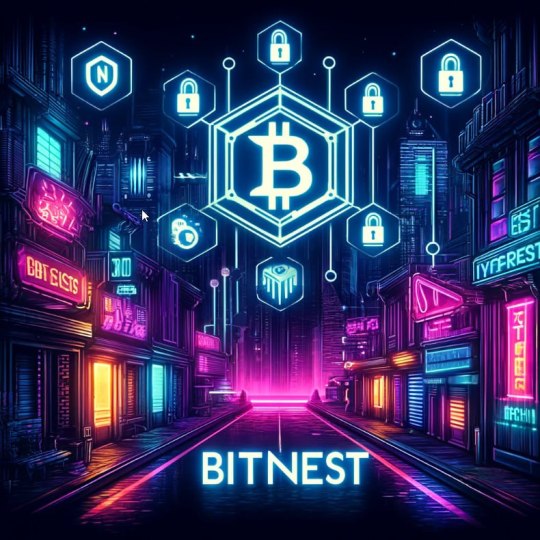
Bit Loop: Open the door to passive income in decentralized finance
In the current rapidly evolving digital currency market, decentralized finance (DeFi) platforms are redefining the shape of financial services with their unique advantages. Bit Loop, as a leading decentralized lending platform, not only provides a safe and transparent lending environment, but also opens up new passive income channels for users through its innovative sharing reward system.
Personal links and permanent ties: Create a stable revenue stream One of the core parts of Bit Loop is its recommendation system, which allows any user to generate a unique sharing link when they join the platform. This link is not only a “key” for users to join the Bit Loop, but also a tool for them to establish an offline network. It is worth noting that offline partners who join through this link are permanently tied to the recommender, ensuring that the sharer can continue to receive rewards from the offline partner’s activities.
Unalterable referral relationships: Ensure fairness and transparency A significant advantage of blockchain technology is the immutability of its data. In Bit Loop, this means that once a referral link and live partnership is established, the relationship is fixed and cannot be changed. This design not only protects the interests of recommenders, but also brings a stable user base and activity to the platform, while ensuring the fairness and transparency of transactions.
Automatically distribute rewards: Simplify the revenue process Another highlight of the Bit Loop platform is the ability for smart contracts to automatically distribute rewards. When the partner completes the circulation cycle, such as investment returns or loan payments, the smart contract automatically calculates and sends the corresponding percentage of rewards directly to the recommender’s wallet. This automatic reward distribution mechanism not only simplifies the process of receiving benefits, but also greatly improves the efficiency of capital circulation.
Privacy protection and security: A security barrier for funds All transactions and money flows are carried out on the blockchain, guaranteeing transparency and traceability of every operation. In addition, the use of smart contracts significantly reduces the risk of fraud and misoperation, providing a solid security barrier for user funds. Users can confidently invest and promote boldly, and enjoy the various conveniences brought by decentralized finance.
conclusion As decentralized finance continues to evolve, Bit Loop offers a new economic model through its unique recommendation system that enables users to enjoy highly secure and transparent financial services while also earning passive income by building and maintaining a personal network. Whether for investors seeking stable passive income or innovators looking to explore new financial possibilities through blockchain technology, Bit Loop provides a platform not to be missed.
Call:@Qnm168 (Telegram)
0 notes
Text

In the current rapidly evolving digital currency market, decentralized finance (DeFi) platforms are redefining the shape of financial services with their unique advantages. Bit Loop, as a leading decentralized lending platform, not only provides a safe and transparent lending environment, but also opens up new passive income channels for users through its innovative sharing reward system.
Personal links and permanent ties: Create a stable revenue stream One of the core parts of Bit Loop is its recommendation system, which allows any user to generate a unique sharing link when they join the platform. This link is not only a “key” for users to join the Bit Loop, but also a tool for them to establish an offline network. It is worth noting that offline partners who join through this link are permanently tied to the recommender, ensuring that the sharer can continue to receive rewards from the offline partner’s activities.
Unalterable referral relationships: Ensure fairness and transparency A significant advantage of blockchain technology is the immutability of its data. In Bit Loop, this means that once a referral link and live partnership is established, the relationship is fixed and cannot be changed. This design not only protects the interests of recommenders, but also brings a stable user base and activity to the platform, while ensuring the fairness and transparency of transactions.
Automatically distribute rewards: Simplify the revenue process Another highlight of the Bit Loop platform is the ability for smart contracts to automatically distribute rewards. When the partner completes the circulation cycle, such as investment returns or loan payments, the smart contract automatically calculates and sends the corresponding percentage of rewards directly to the recommender’s wallet. This automatic reward distribution mechanism not only simplifies the process of receiving benefits, but also greatly improves the efficiency of capital circulation.
Privacy protection and security: A security barrier for funds All transactions and money flows are carried out on the blockchain, guaranteeing transparency and traceability of every operation. In addition, the use of smart contracts significantly reduces the risk of fraud and misoperation, providing a solid security barrier for user funds. Users can confidently invest and promote boldly, and enjoy the various conveniences brought by decentralized finance.
conclusion As decentralized finance continues to evolve, Bit Loop offers a new economic model through its unique recommendation system that enables users to enjoy highly secure and transparent financial services while also earning passive income by building and maintaining a personal network. Whether for investors seeking stable passive income or innovators looking to explore new financial possibilities through blockchain technology, Bit Loop provides a platform not to be missed.
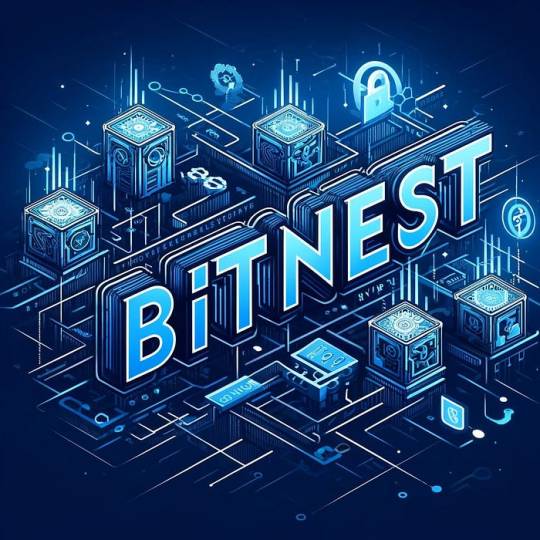
1 note
·
View note
Text
2022. GAME OF THE YEAR. OK?


Hey folks, season's greetings. Runner-up for most sentimental gamer 2021 here and I got a bug up my ass to write about video games. It's equal parts games that did and didn't release this year. Forgive me for any run-ons or excessive commas, this started as a piece on one game on the list and then became a top 10, then it spiraled out of control a tad as I forced myself to write more. Regardless, I'm happy with it and you can check it out under the read more. Happy holidays!

GUNDAM EVOLUTION
Gundam Evo is so goddamned weird. It’s a great game that I cannot recommend anyone jump into now. I really enjoy the core gameplay loop and what it does versus a game like Overwatch— the dash and boost system serve as a salve to the ever-present hero shooter roll-out problem and offer a little bit of movement unpredictability, the lack of clearly defined roles prevented the game from having a dichotomy of “hard” or “soft” tank and support units, and, generally, I found myself having more fun with it than I could recall having with OG Overwatch at the time. Every time I think about going back, however, I remember that it’s one of the clearest examples in recent memory of a publisher just not really giving a shit about its product.
The game sits at a sub-1k player count on Steam, with no way for people in certain regions of the world to even play the game, the console versions took a full two months after initial release to hit digital storefronts, and there’s no backfill system in any capacity. For a game to have such promise in a world where only one hero shooter really survived the late ‘10s burnout period, then to fizzle out so quickly… it’s just kind of a bummer. I would not be surprised if the game is shuttered by this time next year. Still, the time I spent with it felt immensely satisfying.
FORTNITE
Yeah. I fell in last year, (completely by coincidence, when they put the skanking emote in, if you can believe that, which you shouldn't,) and now that I can play Zero Build, my playtime's only gone up. I've also watched as the remaining capital G-I Games Industry folks I follow, who poked and laughed at the Tower Building Gaming For Children also fall into the exact same hole. So... lmao.
I think as you get older you do look for a few more opportunities to have a common activity that you nor your friends really pay a whole lot of attention to but use as a vehicle to shoot the shit. That's Fortnite. It's like getting drunk at a baseball game in the middle of the day for late millennials. It also has full patch cycles that are genuinely, unabashedly, very fun. We got dirtbikes and gravity hammers and fuckin Doom Slayer now man! It's great!
Oh, and to defend my honor just a little, I've spent a grand total of $14 on it. I caved to buy the Rasputin and Gangnam Style emote. What are you, the IRS? Leave me alone.
SONIC ROBO BLAST KART 2
...henceforth referred to as SRB2K because I'm not typing all of that out again, is not a live service game, and also a mod for Doom. It's (probably) the best Sonic kart racer ever made, and it's all built in a game that has nothing to do with the little blue freak. It feels fantastic to play, and it evokes the same feeling of fuzzy-warm coziness that I got from playing a lot of Skulltag one winter. I spent quite a lot of time in late January and February compiling user created SRB2K mods, hacking together soundpacks for existing characters, and screaming into a microphone as I careened through some of the best and worst maps I've ever played in a racing game.
DEAD BY DAYLIGHT
I pretend to hate this game and sometimes I do.
And now it's time for


Let's find out!
10) Teenage Mutant Ninja Turtles: Shredder’s Revenge
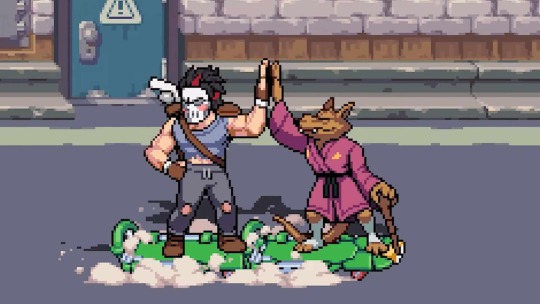
Man, was this a fun surprise! I’ve never been the biggest turtles guy, but I am enough of one to have a favorite that I’ve picked almost entirely on the basis of color and weaponry. (It’s Don, for the record.) I am also enough of a fan of cooperative side-scrolling beat-em-ups that playing this whole game in a little under four hours with a group of friends was a complete blast. I have this weird hang up where I just can’t play these games solo. I think most beat-em-up devs also know that the real meat is in flying through them with a buddy or three or five. (After all, the only way I was ever going to finish Double Dragon: Neon, a game that I love but was definitely not the target market for, was playing it in co-op a year after its release.) That all being said, the fact that TMNT: Shredder’s Revenge allowed for six players at a time is as perfect as it is completely batshit and overwhelming. I’d routinely lose my place altogether as the genuinely fantastic backdrops and battle arenas turned into a flurry of blows and flying footclan bodies, and I simply did not mind.
While my time with it didn’t last long, I couldn’t help but admire the fact there was enough depth in the combos and strategic use of heavy moves, super attacks and thug-juggling technique to potentially make the game worth replaying. This is not even mentioning the genuinely fantastic sprite, level and sound design work. Fast, fun, and punching above its weight class as a title that was free day one on Game Pass, a fact of the gaming landscape that I constantly feel like we’re on the verge of having a reckoning with. Anyway!
9) Rumbleverse
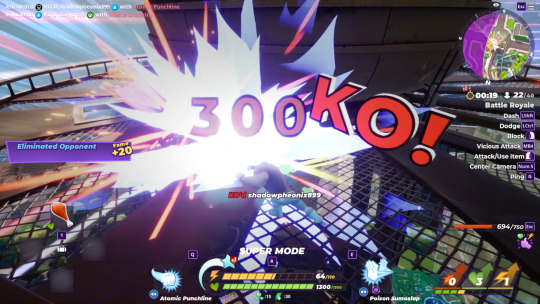
I must preface this blurb with the fact that I have completely fallen off of Rumbleverse and I am genuinely sad I don’t have more to say about it. It’s been probably 3 months since I last fired into Grapital City, but the pull to go back amidst my neuroses and general malaise has been strong. It’s one of the few battle royale games where the insane love for its inspirations and the dedication poured into the game itself both shine right through. From the looser fighting game influence in its move priority and combo systems, to the completely unmistakable wrestling mark DNA, Rumbleverse is authentic and just plain fun. Compared to your bog-standard, shooty-bang-bang battle royale, the hype, guttural-noise-inducing moment ratio is off the fucking charts here, and that’s reason enough for me to include it.
By the way, every now and then I’ll hear people bemoan the fact that there are no melee-focused battle royale games. The fact that this game did not once and for all solve this quandry for people despite being the best implementation of that concept? It makes me want to scream.
8) Marvel Snap
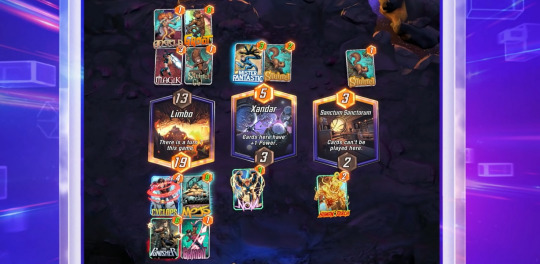
Don’t look at me like that.
I really didn’t expect to like Marvel Snap. I’m not a comic book or superhero movie guy, but it’s amazing what being both free and available on Steam can do for you. Despite starting a little rough and having some growing pains in making decks that I actually wanted to use, the game of Snap itself is undeniably fun and incredibly easy to fall into. As of the time of writing this, I’m collection level 593 and I can no longer deny that I’m just playing it for giggles. This is the game that the certain-Blizzard-card-game-playing-me of 2017 wanted and just didn’t realize. Despite the whale bait in this very obviously mobile card game being clear and evident, and the fact that there is no way to assuredly get cards you want before level 500, I still somehow feel like this is the one online CCG I’ve seen that treats you with some modicum of respect... so long as you pace yourself and play in chunks. The quick nature of Snap, of course, isn’t really conducive to this, but you really just have to chalk that one up to terrible, awful, no-good, very bad mammalian reward responses.
I know the one thing that people just cannot shut up about is the game’s brevity, but it really is important to herald. As someone who’s played half-hour Hearthstone matches, it’s an undeniable factor in its continued popularity. After a particularly rough two days in late November where I kept snapping and kept playing despite losing six(!) ranks, I remembered an extremely salient realization I had while falling out of love with MOBAs a few years ago— if it sucks bad enough, you can leave. You can hit da bricks, so to speak, if you’re not making anyone else suffer as a result of it. If you’ve put a handful of your chips on black the last six spins and lost every time, it's okay to walk away from the goddamn table.
Latent gambling impulses aside, Snap is undeniably fantastic, and not even the only card game I’ve been playing this year.
7) Downfall: Slay The Spire

I’ve played a lot of Slay The Spire. It’s probably not even a fraction as much as the truly dedicated card gaming wizards that I’ll occasionally see screenshots from on the Community Hub, but damn, I love that game. Slay The Spire also came to me in a weird time; I was knee deep in my graveyard shift job at a gas station and spent my evenings, (7AM-11AM on any given day,) trying DESPERATELY to find a game that didn’t require too much of me but was still engaging enough to play between smoking pot, drinking, doing laundry, or all three. I bought the game on a whim, knowing only that it was a rogueli(k)(t)e and a card game, then fell ass over end into a Spire shaped hole.
Downfall: Slay The Spire is a lovingly crafted mod that pretty much just serves as an excuse to get me to play even more of this damn game. From the incredibly well-translated boss characters to the Hermit’s ability to pass as a character that Mega Crit would’ve made themselves, Downfall is fantastic. It could easily pass as an officially released expansion, and it's something I’ve already lauded over in the Steam Reviews for it
6) HYPER DEMON
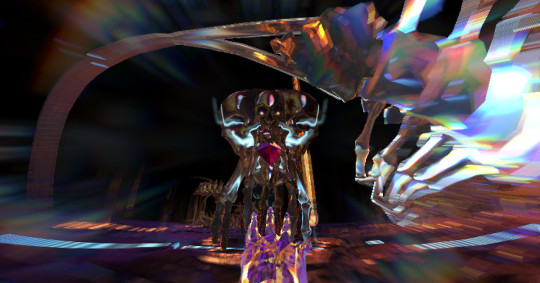
This shit is bananas, man. I loved Devil Daggers so, so much, and despite still being squarely stuck 50 seconds away from the Devil Dagger, I swear I will get it before I shuffle off this mortal coil. And you’re gonna give me another lofty goal to strive for in a completely different game 6 years later? Fuck you m4tt. I love you m4tt.
I’ve played 3 ½ hours of HYPER DEMON so far. It was all in one sitting. I was amazed I didn’t forget to breathe during all of those 210 minutes. It’s the exact same all-consuming, focus demanding immersion that Devil Daggers ensnared me with in 2016. It’s Devil Daggers: Puzzle Fighter. It’s a cocktail of cosmic horror, Windows Media Player visualizer, Quake 3 montage over-editing, what I imagine the visual sensation of DMT looks like, and pure, unfettered skill-based FPS ecstasy. HYPER DEMON holds you to the sanding belt of its incomprehensible blazing-fast iridescent horrorscape and is unfeeling to whether you can handle it or not. I want more.
I need to play more. I will be playing more. I live to serve SORATH.
5) Super Mario 64 — B3313

I have never completed Super Mario 64. In fact, to my recollection, I never actually owned a copy of it despite having an N64 around the time of its release. I did, however, play an awful lot of this Super Mario 64 romhack in January. It has stuck with me ever since.
In second? grade I’d pass the controller at my best friend's house, as each of us desperately tried to clinch the red coin star in Lethal Lava Land or not tumble off Cool, Cool Mountain. In my teens I’d boot up an emulated copy through Project64 and try, to my behest, to play a game that paled in comparison to the breadth of experiences I’d already had with, at the time, recently released games. (Of course, when your high watermark is something like Garry’s Mod with workshop support or Just Cause 2, anything else feels like hoop and stick.) Even still, I appreciated what Mario 64 meant at both of these stages of my life, for one reason or another. Now, as an adult who claims to have a pretty good understanding of video gaming history, that respect has only deepened.
As a kid, I could recall broad strokes of the in-game world when I was away from the Mario Sanctioned Zone of my best friend’s house. The general layout of the first floor of Peach’s Castle, the first Bowser stage, the royal slide, as well as strange fragments of the hub world architecture scattered through my brainspace. In the days after a hang-out or sleepover, I’d devise ways to get around stages in my head, but SM64 never stuck in my craw for long amounts of time. Yet, I still had moments where it was forced back into my consciousness.
During a particularly shitty bout with the flu when I was about seven, my child brain conjured up visions of a castle that… sort of existed. In between retching up anything that wasn't saltines and soup, half-watched segments of Nickelodeon’s Games and Sports channel, and confronting the sickly taste of bile and lemon-lime Gatorade, I’d pass in and out of dreams, seeing feverish facsimiles of Mario 64. Strange floating voids that might’ve resembled a run-up to Bowser, Tick-Tock-Clocks that didn’t seem to match up with what was on the cartridge, and impossibly long hallways that bled into one another.
I had a passing knowledge of the “every copy of SM64 is personalized” “meme” before playing B3313, and saw increasingly convoluted icebergs and the Wario Apparition, (something that thankfully doesn’t show up in this romhack,) as laughably goofy addendums to already lame gaming creepypastas. The general idea of this hack, despite being fueled by this mix of amateur horror, is something still so genuinely fascinating to me. It's not even really the concept of a game with a “personalization AI,” but moreso the idea of imperfect memory. Things might be changing without any input from some spooky and malicious entity pulling the strings, you just can't remember what these places looked like. Those who are as equally fascinated with B3313 as I am use that term— “fever dream.” They use it liberally when talking about the general feel of the romhack, while also mentioning that at some point during their childhood, they would also have dreams about parts of Mario 64 that didn’t exist, or were slightly off. As one of those people, B3313 nails that exact feeling one-hundred percent.
Super Mario 64: B3313 is a fever dream come true. It’s a slurry of beta, demo-build and original content that bleeds into areas from the retail copy of Super Mario 64. Despite its brief, eyeroll-worthy, yet awkwardly fitting brushes with metatextual horror writing, (enter this cave if you want to see your deepest fears unfold!!!!!!!!!,) the main conceit of this strange, alternate-history beta-dump Mario romhack still hits like a guided missile to my brain. The seldom-played yet still familiar memories of Peach's Castle turn from a welcoming environment into an LSD: the Dream Emulator-esque maze of doors to entirely different castles, alternate versions of existing Mario worlds, densely foggy ominous hallways, and harshly inhuman architecture. It’s bizarre, surprisingly unsettling and manages to evoke a sense of familiar unfamiliarity.
B3313, Wet Dry World’s Negative Emotional Aura and the Personalized Copy concepts are at a bizarrely interesting confluence of childhood imagination, video game folklore, niche meme culture, and, most importantly to me, the impermanence of memory. It already feels like decades ago that we were telling people that, no, Nelson Mandela did not die in prison, the Berenstain bears’ surname was just being misremembered, and, uh, that Taco Bell never had “medium” sauce, but there’s something weirdly different about the foggy, self-aware recollection of sections from Peach’s Castle that never actually existed. There’s an unspoken understanding in YouTube comment sections and other circles versed with B3313 that none of this is, y’know, for real. It’s all gotten a bit tongue and cheek and suffocatingly ironic now, and while some would consider this a horrible breaching of kayfabe, I see it as a necessity to prevent B3313 and other experiences like it from becoming deeply lame, reminiscent of the early days of extremely self-serious YouTube ARGs.
There’s a seal that you break at some point if you came up playing video games. It’s the realization that everything in the game you’re currently playing is there on the disc. Emotion engines and curated experiences cannot magically conjure a completely unique experience specifically for you. With digital games, automatic updates, and the increasing capabilities of neural networks and AI, this becomes a harder point to make, but we’re not quite to the point where games can just generate new assets out of thin air. New content speeds through pipelines for still-alive service games, patch notes get nailed to the theoretical doors of your chosen Gaming Chapel, yet ghosts do not haunt hardware. There is no “personalization AI” present in a two-decade old N64 rom, and with how fast information travels and the fact that leaking video game news and secrets is basically a goddamned industry now, most games don’t get to keep their secrets for long, no matter how much I may want them to.
As you do with the childhood loss of innocence, you learn to eventually understand and cope with the feeling that games are not infinite dream machines made for you and you alone. However, you inevitably replace that malaise and disappointment with the fact that these collections of data and if-then statements still have so, so much to share with you. Experiences like B3313 come along from time to time to serve as a haunting reminder, though. This romhack is a transmission from a moderately different yet hauntingly similar reality that threatens to plunge you back into the depths of childlike mystique, wonder, and, funnily enough, horror, but with your current adult understanding and awareness. It’s equally as enticing as it is terrifying.
I know part of it is just getting older, not having enough space in your head for everything, and generally just "recording over" less important events in your life, but I've realized in the last few years that I don't remember parts of my childhood. I'm not talking year long spans or anything like that, but traumatic experiences that my brain has blotted out, or lengths of time that I just used to remember very succinctly. I don't think my childhood was any more or less extraordinary than anyone else's, probably on the "less" side of that spectrum, actually, but… it just feels weird. In finding old TV show uploads and reliving games from that time period, I feel like I've been trying to piece it back together or convince myself that I shouldn't. I think this romhack, in its own way, helped me cope with a little bit of that.
Playing B3313 is tasting honey lemon cough drops as I sweat into my childhood bedsheets, drifting in and out of tenuous sleep in my dark bedroom in the middle of the day. In its own weird way, it’s beautiful.
4) Hitman: World of Assassination
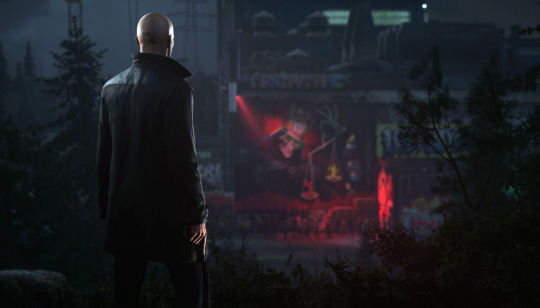
Thanks for sticking with me through that.
Up until recently, I always felt like an outsider when I said I was a fan of the Hitman games. I loved Blood Money when I was at the ripe old age of 10, and loved watching Tom Bowen’s “How Not To Play Hitman” series slightly more than actually playing it. I did end up finishing Blood Money, eventually moving onto Silent Assassin and, for some reason, Codename 47. I could not finish the first, nor stomach the latter, and it always made me feel like… a poser, I guess? They were pretty “hardcore” games at the time, known for stringent stealth and detection mechanics, and looking at forum posts and videos at the time it felt like I wasn’t getting The Full Experience by not being a bad enough dude to play them, let alone get Silent Assassin ranks. The World of Assassination trilogy has blown that locked door off the fucking hinges for me.
The three newest Hitman games are wonderful romps. As someone who’s been following Giant Bomb for a decade and loved their Hitman coverage and content, it feels like I’m just copying their homework here, but oh well. From throwing homing briefcases and walking around as a clown with a WA2000, to actually seeing the bald beauty's story wrap in the third chapter, Hitman asks you to take these games as seriously as you can. While you’re still definitely Agent 47, (nom de guerre, Tobias Rieper,) and still definitely going through an actually pretty good plot thrust in between garroting sociopathic billionaires, you are given carte blanche to steal so many clothes, chuck so many wrenches and empty as much lead into bystanders as possible with very little restriction. It's this distinction that I feel makes stuff like World of Assasination and, in my opinion, the Dead Rising series work. Comedy is often a hard thing to do in games, and I feel it's best left up to player expression and interpretation in most cases.
Whenever possible, I WILL go for alert-less stealth runs in any game where it's possible, and I killed hours meticulously reloading checkpoints, or missions wholesale, in the World Of Assassination trilogy back in February just to get Silent Assassin. But I also had plenty of moments where I had to break my own self-imposed restrictions to, for example, shoot Vanya Shah right in the back of her smug head and beat a quick, immediately exposed retreat as I let the exhausted sweatshop workers she rules over see her body careen two stories to the ground below her. This was a moment so satisfying that I am struggling to not reinstall the game right now and record a clip myself. (By the way, while Hitman has never been about killing people who don’t deserve it, WoA’s targets ride a hell of a line between being laughably sociopathic and ripped from the headlines of [what is hopefully not] the near future. I really do admire it.)
Hitman had some of my absolute favorite moments this year and, despite it pushing you strongly to a lot of those moments, they never felt unearned. I often yearn for the desire to feel like I truly was the brain genius who earned my moments, but Hitman helped lessen some of that stringency on myself while still allowing me to push my understanding of the game. From throwing Erich Soders’ replacement heart into the trash to whacking the Janus in a send-up to Blood Money’s A New Life, it’s some of the most satisfied I’ve ever been getting lead to water.
And, god, that fucking mission in Berlin? Insane. Insane. I know people talk up Dartmoor a lot and it does deserve it but… man.
3) Dicey Dungeons
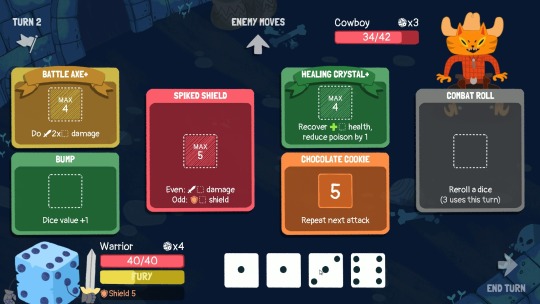
In the midst of my summer-time seasonal depression, nothing was really working for me. I found myself pouring over what was on PC Game Pass, writing off games that seemed like too much of an undertaking after I’d completed a certain, lengthy RPG earlier in the season. Dicey Dungeons was a blip on my radar once upon a time, but had slipped through the cracks of my memory until I scrolled past it in my Xbox app, then inched my way back up to it.
I am both surprised and not that I spent SO much time playing Dicey Dungeons this year. As a man that will play any rogueli(k)(t)e you put in front of me at least to the completion of one successful run, it’s basic fuckin’ math. It’s the logical conclusion of just how rudimentary you can make a roguelike and have me still play it.
It’s also, by technicality, the third god damned card game on this list.
Dead simple— Dicey Dungeons is a game of rogueli(k)(t)e Yahtzee with RPG classes, inventory management, and an absolutely fantastic soundtrack that has me picking up my chiptune defending sword-and-board once again. The fate of your runs are, with some influence from the player, entirely up to literal dice rolls. I truly love just how much the game leans into being a stone-cold RNG fest, down to the fact that the entire thing takes place in a game(show) of fate hosted by an anthropomorphized Lady Luck. Its writing and enemy design is sickeningly, saccharine sweet and just a tiny skosh insufferable, but it never gets in the way of how rock solid and addictive the game itself is. So much so that I squeezed this damn game dry of content.
I’ve seen quite literally every piece of new content the game has to offer shy of the Halloween expansion, (it turns the game into a lethal puzzle thing, just not my cup of tea,) and I still had to stop writing this section of the list to go play a quick round. Played Robot in Parallel Universe with a decisive victory against Madison, in case you’re curious. And I cranked the volume in the boss fight for the first time since I turned it down to catch up on podcasts and video essays while whittling through the end-game hard modes. Lifeline goes completely insane as does the rest of the soundtrack. I was throwing ass in my kitchen making sandwiches listening to this months ago. This game just rules.
2) Yakuza 7: Like A Dragon
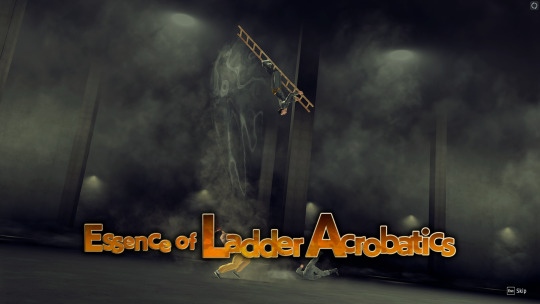
Of all the ‘guys’ I have claimed to not be in this GOTY list, I am, maybe least of them all, a turn-based RPG guy. I’ve tried, multiple times to breach them, and the best I can get is about halfway through most mainline Pokemon games before the tedium of Okay Now You Go battling gets to me. And yeah, I know, I just got done rattling on about two different card and dice-based roguelikes that are also turn based but… that’s different, y’know? I’m not just highlighting Firaga and watching an animation play out, I’m throwin’ dice and channeling lightning orbs and…
Look, it’s not important. What is important is I finished my first fucking Yakuza game this year. And it was the goddamn turn based RPG! Yakuza 7 is one of the most charming and enjoyable games I’ve played in my life! And it’s a turn based RPG!
That’s horrifying!
I don’t need to sing the praises of any of Ryu Ga Gotoku’s games. If you’re following me, you’re probably fully bought into the series or have heard people around you audibly get boners for Goro Majima and Kazuma Kiryu. In fact, I find it incredibly difficult to write anything new or provocative about this game that hasn’t already been said, but I just feel so strongly about it. It’s the insanely fun video-game-meets-real-life premise and immeasurably loveable cast of misfits that excel. It’s the heat moves. It’s Zhao. It’s the raw passion, genuine heartbreak, and joy of just being here that really got me. It’s Zhao again. Combine all that with an active battle system that satisfies the goopy goblin gamer brain’s need for near constant input and man? I’m set.
I know through cultural osmosis that Yakuza is a series about a few key things: compassion, loyalty, the bonds we share with others, and what loyalty really means. Yakuza 7 obviously has all of this in spades, but especially what it has to say about the lower/working class, anyone unfortunate enough to be homeless, sex workers, and those from impoverished backgrounds is so effortlessly excellent that it makes me excited to go back and play this series from the word go. I’ll miss the hell out of Ichiban and the shonen protagonist brand of fire-blooded vigor and bullheadedness he brought, but I’m excited to (…eventually) start anew.
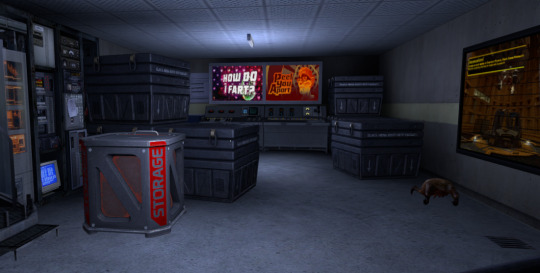
1) Jabroni Brawl: Episode 3
Here we are. Finally. I’m not only writing something about a released version of Jaykin Bacon Jabroni Brawl, but I also genuinely feel it’s my game of the year. And now that we’ve arrived at this juncture I just keep thinking… what the hell do I even say about this game? I found something, but fuck, it took a while:
It must be said that I was raised in a triple parent household: I was brought up by my mother, father, and the Source engine. When I was 9 years old, I tuned into a mid day re-run of the now anicent television program The Screensavers that showed off version five of Garry’s Mod. At that point, I’d already played scattered chunks of the short, but enthralling Half-Life 2 demo we had on our family computer, (of course, the Icthyosaur jumpscare and being teleported to Ravenholm scared me right off,) but hadn't picked up the game. I begged my poor cash strapped father for a copy probably too many times, and after we both realized the pirated copy he nabbed wouldn’t be compatible, got a Half-Life 2 & Counter Strike: Source double pack for me as a birthday/Christmas gift.
I loved Garry’s Mod. I’ve got no clue how many hours I poured into version 9 before its subsequent release on Steam as an officially sanctioned mod, but let’s just say it was a lot. In December 2005 I joined the Facepunch forums, learned the difference between models and textures, corrected a lot of spelling mistakes, had my first bouts with navigating Windows folder directories, definitely made some crude sex poses, and found my first group of online friends shortly thereafter. I would eventually slowly slip away from regular patronage to Facepunch sometime in the early 2010s, but the impact it had on me as a youth is unquestionable. We can talk about whether it was a net good some other time though.
Before this gets too far into navel gazing and nostalgia, I’ll say that along the line I played a wonderful mod for Half-Life 1 called Half-Life 2: Jaykin Bacon Source that serves as the genesis for Jabroni Brawl. It’s a mess, but up until its Facepunch-branded revival and subsequent alpha/beta tests, it was the only thing I’d ever played like it. It’s full of ripped assets from other mods, purposefully goofy voice acting from its shithead (lovingly) teenage creator, and plenty of stuff taken from the then-recent Metal Gear Solid 3, a game I had also fallen in love with prior. It was dumb fun that I have forced multiple groups of friends at varying stages of my life to play and have a ludicrous amount of attachment to.
And Jabroni Brawl: Episode 3 is that, all over again, from the faithfully recreated weapons and impenetrable Facepunch callbacks, to the fact that this more or less ended up being a surprisingly official-feeling love letter to anyone who has ever made anything in either Source or Goldsrc. Jabroni Brawl knows what it is, and that’s all it is. It’s a deathmatch mod for and by the people still cherishing the rapidly atrophying muscular structure of a game engine that just won’t seem to die. It's for the people who want to get a group of people together on a Friday and throw friction grenades at/fart on each other. And that's all it needs to be to knock it out of the park.
Source and its modding scene still means a lot to people, myself included. For a lot of us weirdoes, it was a playground that evolved into a way to make friends, hone skills and even turn interests into hobbies and jobs.
But hey, this is getting KINDA GAY!!!!!!!!
Jabroni Brawl is frenetic FPS bullshit. It’s terminally stupid, rough around the edges, and unbelievably fun with the right people. Jabroni Brawl is gaming. It’s e-sports. It's, dare I say, hobby-grade. And it’s a complete goddamn miracle. I mean, fuck, this is probably the one project to start on Facepunch and actually see the light of day, right? Even seeing the Tales From The Galactopticon models in the customization menu made me feel positively ancient.
Here’s an in-game clip of a good friend killing himself in maybe the funniest way I’ve ever seen. Take care, and Feliz Navidad.

11 notes
·
View notes
Text
Friday 25/2/22 - Media Recommendations #27
Hey it's me again. It's been a while since I've had the motivation to put one of these together, but I reckon there's no time like the present to recommend more media. I have a deep emotional connection to the series of topic today, so there's gonna be a lot of fluff in between actual information.
So without further ado, here's my return to (hopefully) regular blogposting with some Nerdy Media Recommendations.
Pokémon Legends: Arceus
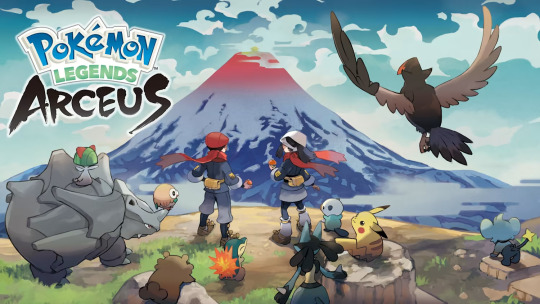
Minor Spoilers Ahead
I have been an avid Pokémon fan ever since I was a young child. Like many, my first experience with the series was the Anime, but in high-school I got my first taste of the videogames. The first mainline Pokémon game I played was Pokémon Diamond.
As I found out retroactively, the Generation 4 pokemon games solidified a lot of the previous gameplay loops and mechanics of previous games, while also introducing new core mechanics, like the Physical/Special Move Split. Generation 4 also rounded out a lot of evolutionary loose ends of previous generations. New pre-evolutions like Bonsly, and Mime Jr, as well as new end-evolutions like Weavile, and Togekiss, as well as the (as of now) final Eeveelutions to be added. No games after this have capitalised on the missing pieces of previous pokemon lines in the same way. Obviously, nostalgia goggles have formed a part of my adoration of the Sinnoh region and its games, but IMO, no generation has tidied up the main series as extensively since.

So imagine my delight when I heard that Pokemon would be finally taking a huge departure to the Main Series formula and it would take place in the same setting as the first Pokémon games I played.
Combat
A lot of gaming interest in the Pokémon games recently have been on the competitive meta; building teams of Pokémon to battle other humans. This means the single player campaign has never been super complex, and a large amount of time is instead spent breeding and training ideal battle teams in the postgame. Legends Arceus ditches this entirely. There is no competitive multiplayer, and the combat system has been overhauled to better fit a single player experience.

The number of Pokémon moves has been cut down from almost 900 to 180. Moves that have interactions with Pokémon switching, special conditions, hitting multiple opponents, or even just redundant moves that are reflavoured but identical. All gone. All that remains are damaging attacks, some status condition moves, and minimal buff/debuff attacks. And honestly? Love it. Streamline the process, you're only gonna be fighting computers, and trainers battles are super rare, so just make battles as straightforward as possible.

The traditional idea of "turns" in Pokémon are gone, so that Pokémon just go one after the other, and if the Pokémon are slow or fast enough, they can occasionally squeeze in extra or fewer attacks than their opponent. The new mechanic of STYLES allows the player to intentionally shake up this order by making moves faster but weaker, or stronger but slower. Sometimes wild Pokémon will attack in groups, and they all take their turns, making this a bit harder to handle.
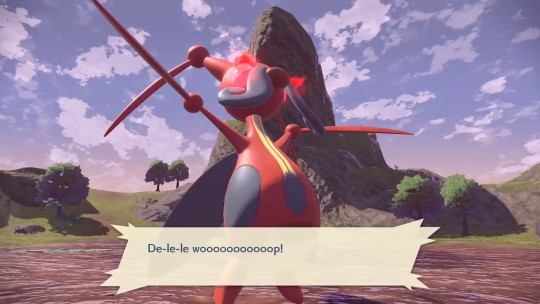
Combat reaches a peak with boss battles. Stronger than usual Alpha Pokémon stalk the wilds, and are often 20 or 30 levels higher than the player's party when they first reach them. And each area has a mega boss, the Nobles, that pulls the player into a real time action fight, something the main series hasn't done before.
Exploring the World
Previous Pokémon games had a continuous, but restrictive world to explore. You could walk, bike, and swim from the starting town to the Pokémon League in one trip. However, you were restricted to the main path. Rocks off to the side, bushes, and knee high ledges prevent the player from free roam of the region. Legends Arceus takes a completely different approach.
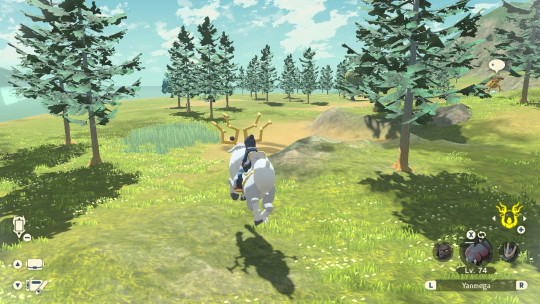
Legends Arceus is a segmented Open World Game. The region is split into 5 large explorable areas of wilderness, plus one bustling town. Each area is like a mini-Breath of the Wild Hyrule, with varieties of forests fields, mountainsides, seascapes, snowfields, and even ancient ruins and caves stretching across the horizon. Most of what you can see, you can walk upon.
The days of running into tall grass to meet your fate are over. Now, Pokémon roam the world in plain view, so if you initiate a battle with a Wild Pokémon, you know what you're getting yourself into. New items and Pokéballs have been introduced to capitalise on the ability to sneak up on the critters and strike from the shadows. Now the player is the menace in the tall grass.

Ride Pokémon, a concept first envisioned in gen 6, but perfected in gen 7, have come back in this game, with abilities perfect for traversing a vast, bumpy landscape. Wyrdeer essentially replaces the bike, making you faster and better equipped for uneven surfaces. Ursaluna is the dowsing tool, finding hidden items in the ground. Basculegion serves as the Surf pokemon, moving rapidly across water and gives mid-air bullet-time opportunities. Sneasler allows the trainer to BotW style climb up vertical surfaces. And Braviary is combined Revali's Gale and Paraglider.
Sorry for the constant Breath of the Wild parallels, but I put a lot of time into that game, so much that I fully 100% completed it. Speaking of which...
Collection and Completioning
Despite the series's tagline being "Gotta catch 'em all", most mainline games do not put special emphasis on completing the Pokédex. But Pokémon Legends Arceus put the Pokédex front and centre in the gameplay loop. First thing, there is more effort required to "complete" a Pokédex entry. Catching a Pokémon is only the first step.
Every Pokémon has a list of tasks needed to complete, ten points worth of tasks and you have fully studied that Pokémon. This can vary from seeing them perform a certain move many times, watching them eat, or even observe special behaviour in the wild. This recontextualises the idea of the Pokédex from a simple collectathon, to more of an actual academic study of wildlife. Although it's harder work, I think a completed Pokédex feels more earned now.
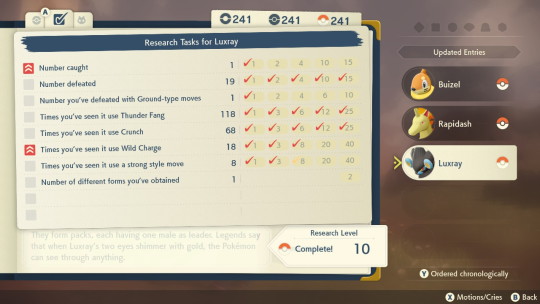
The importance of the Pokédex matters more than just the collecting too. Your Pokédex progress reflects on your ranking as a field researcher, and thus, your permissions in the field. Whereas I could beat Pokémon Diamond version without ever catching a Wild Pokémon, Legends Arceus bars you from exploring new areas if your research level is not high enough. And of course, you cannot meet the titular Arceus until you have completed the Pokédex entry for every basegame Pokémon.
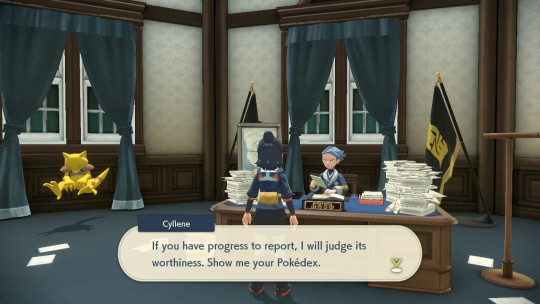
Although all collecting goes toward the Pokédex in some way, there are a variety in tasks to get there. 108 spectral wisps litter the region, there are 28 Unown to collect hidden in nooks and crannies, and around 100 quests from townsfolk asking you to teach them about Pokémon.
Concluding thoughts
Hopefully the way I've explained the game so far makes it clear that I am a big fan of the changes Pokémon Legends Arceus have made to the traditional formula. Although, considering how far this game has moved from the core games, it may make more sense to think of it more as a spin-off.
The demand for the next iteration of the competitive Pokémon meta means that, at some point, another more traditional main series game will come that uses battle tactics useful to human PvP battles. While I would like more games in this vein in the future, I do not think they will replace the traditional formula. Hopefully some gameplay ideas influence the next "main series" game in some ways.
I did not come away from this game with zero complaints either. The artstyle and lighting is great, but it's clear that they didn't optimise exploration of the world for high paced gameplay. While flying or running on Ride Pokémon, textures and landmasses pop in jarringly, and the textures themselves don't look particularly amazing up close. Some regions are boringly empty, particularly the snowy regions. And although this does make some sense in-universe, as this is a land still under active exploration by colonial forces, there is clearly room for more detail.
Character expressions and gestures are certainly better than past Pokémon mainline games, but they still feel very stiff and emotionless for a Switch Game. I'm not asking for full voice acting for every character, but maybe a bit more facial and guesture complexity, and maybe some quick sounds or quips during speech like in Zelda or Dragon Quest characters.
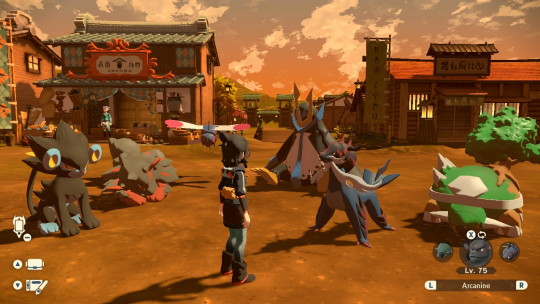
Complaints aside, I can comfortably recommend Pokémon Legends Arceus to anyone with a similar gaming taste to me. If you like Open World Exploration, JRPGs, collectathons, or most of all... Pokémon Games, then definitely give this a try. This great dive into unfamiliar waters for the Pokémon company is a good sign for new games to come.
#blog#blogpost#media recommendations#videogame recommendations#Pokémon#pokemon legends arceus#pokemon gen 4#legends arceus
10 notes
·
View notes
Text
Insights into DAI’s development from Blood, Sweat, and Pixels
The book is by game industry journalist Jason Schreier (it’s an interesting read and well-written, I recommend it). This is the cliff notes version of the DAI chapter. This info isn’t new as the book is from 2017 (I finally got around to buying it). Some insight into DAO, DA2 and cancelled DA projects is also given. Cut for length.
BW hoped that DA would become the LotR of video games. DAO’s development was “a hellish seven-year slog”
The DAI team are compared to a chaotic “pirate ship”, which is what they called themselves internally. “It’ll get where it needs to go, but it’s going to go all over the place. Sail over here. Drink some rum. Go over here. Do something else. That’s how Mark Darrah likes to run his team.” An alternative take from someone else who worked on the game: “It was compared to a pirate ship because it was chaotic and the loudest voice in the room usually set the direction. I think they smartly adopted the name and morphed it into something better.”
A game about the Inquisition and the large-scale political conflicts it solves across Thedas, where the PC was the Inquisitor, was originally the vision for ‘DA2′. Plans had to change when SW:TOR’s development kept stalling and slipping. Frustrated EA execs wanted a new product from BW to bolster quarterly sales targets, and decided that DA would have to fill the gap. BW agreed to deliver DA2 within 16 months. “Basically, DA2 exists to fill that hole. That was the inception. It was always intended to be a game made to fit in that”
BW wanted to call it DA: Exodus, but EA’s marketing execs insisted on DA2, no matter what that name implied
DAO’s scope (Origin stories, that amount of big areas, variables, reactivity) was just not doable in a year, even if everyone worked overtime. To solve this problem, BW shelved the Inquisition idea and made a risky call: DA2 would be set in one city over time, allowing locations to be recycled and months to be shaved off dev time. They also axed DAO features like customizing party members’ equipment. These were the best calls they were able to make on a tight line
Many at BW are still proud of DA2. Those that worked on it grew closer from all being in it together
In certain dark accounting corners of EA, despite fan response to DA2 and its lower sales compared to DAO, DA2 is considered a wild success
By summer 2011 BW decided to cancel DA2′s expansion Exalted March in favor of a totally new game. They needed to get away from the stigma of DA2, reboot the franchise and show they could make triple-A quality good games.
DAI was going to be the most ambitious game BW had ever made and had a lot to prove (that BW could return to form, that EA wasn’t crippling the studio, that BW could make an ‘open-world’ RPG with big environments). There was a bit of a tone around the industry that there were essentially 2 tiers of BW, the ME team and then everyone else, and the DA team had a scrappy desire to fight back against that
DAI was behind schedule early on due to unfamiliar new technology; the new engine Frostbite was very technically challenging and required more work than anyone had expected. Even before finishing DA2 BW were looking for a new engine for the next game. Eclipse was creaky, obsolete, not fully-featured, graphically lacking. The ME team used Unreal, which made inter-team collab difficult. “Our tech strategy was just a mess. Every time we’d start a new game, people would say, ‘Oh, we should just pick a new engine’.”
After meeting with an EA exec BW decided on Frostbite. Nobody had ever used it to make an RPG, but EA owned FB dev studio DICE, and the engine was powerful and had good graphic capabilities & visual effects. If BW started making all its games on FB, it could share tech with sister studios and borrow tools when they learned cool new tricks.
For a while they worked on a prototype called Blackfoot, to get a feel for FB and to make a free-to-play DA MP game. It fizzled as the team was too small, which doesn’t lend itself well to working with FB, and was cancelled
BW resurfaced the old Inquisition idea. What might a DA3 look like on FB? Their plan by 2012 was to make an open-world RPG heavily inspired by Skyrim that hit all the beats DA2 couldn’t. “My secret mission was to shock and awe the players with the massive amounts of content.” People complained there wasn’t enough in DA2. “At the end of DAI, I actually want people to go, ‘Oh god, not [another] level’.”
It was originally called Dragon Age 3: Inquisition
BW wanted to launch on next-gen consoles only but EA’s profit forecasters were caught up in the rise of iPad and iPhone gaming and were worried the next-gen consoles wouldn’t sell well. As a safeguard EA insist it also ship on current-gen. Most games at that time followed this strategy. Shipping on 5 platforms at once would be a first for BW
Ambitions were piling up. This was to be BW’s first 3D open-world game, and their first game on Frostbite, an engine that had never been used to make RPGs. It needed to be made in roughly two years, it needed to ship on 5 platforms, and, oh yeah, it needed to restore the reputation of a studio that had been beaten up pretty badly. “Basically we had to do new consoles, a new engine, new gameplay, build the hugest game that we’ve ever made, and build it to a higher standard than we ever did. With tools that don’t exist.”
FB didn’t have RPG stats, a visible PC, spells, save systems, a party of 4 people, the same kind of cutscenes etc and couldn’t create any of those things. BW had to create these on top of it. BW initially underestimated how much work this would be. BW were the FB guinea pigs. Early on in DAI’s development, even the most basic tasks were excruciating, and this impacted even fundamental aspects of game design and dev. When FB’s tools did function they were finicky and difficult. DICE’s team supported them but had limited resources and were 8 hours ahead. Since creating new content in FB was so difficult, trying to evaluate its quality became impossible. FB engine updates made things even more challenging. After every one, BW had to manually merge and test it; this was debilitating, and there were times when the build didn’t work for a month or was really unstable.
Meanwhile the art department were having a blast. FB was great for big beautiful environments. For months they made as much as possible, taking educated guesses when they didn’t know yet what the designers needed. “For a long time there was a joke on the project that we’d made a fantastic-looking screenshot generator, because you could walk around these levels with nothing to do. You could take great pictures.”
The concept of DAI as open-world was stymying the story/writers and gameplay/designers teams. What were players going to do in these big landscapes? How could BW ensure exploring remained fun after many hours? Their teams didn’t have time for system designers to envision, iterate and test a good “core gameplay loop” (quests, encounters, activities etc). FB wouldn’t allow it. Designers couldn’t test new ideas or answer questions because basic features were missing or didn’t exist yet.
EA’s CEO told BW they should have the ability to ride dragons and that this would make DAI sell 10 million copies. BW didn’t take this idea very seriously
BW had an abstract idea that the player would roam the world solving problems and building up power or influence they could use. But how would that look/work like in-game? This could have used refinement and testing but instead they decided to build some levels and hope they could figure it out as they went.
One day in late 2012, after a year of strained development on DAI, Mark Darrah asked Mike Laidlaw to go to lunch. “We’re walking out to his car,” Laidlaw said, “and I think he might have had a bit of a script in his head. [Darrah] said, ‘All right, I don’t actually know how to approach this, so I’m just going to say it. On a scale of one to apocalyptic... how upset would you be if I said [the player] could be, I dunno, a Qunari Inquisitor?’”
Laidlaw was baffled. They’d decided that the player could be only a human in DAI. Adding other playable races like Darrah was asking for would mean they’d need to quadruple their budget for animation, voice acting, and scripting.
“I went, ‘I think we could make that work’,” Laidlaw said, asking Darrah if he could have more budget for dialogue.
Darrah answered that if Laidlaw could make playable races happen, he couldn’t just have more dialogue. He could have an entire year of production.
Laidlaw was thrilled. “Fuck yeah, OK,” he recalled saying.
MD had actually already realized at this point it’d be impossible to finish DAI in 2013. They needed at least a year’s delay and adding the other playable races was part of a plan/planned pitch to secure this. He was in the process of putting together a pitch to EA: let BW delay the game, and in exchange it’d be bigger and better that anyone at EA had envisioned. These new marketing points included playable races, mounts and a new tactical camera. If EA wouldn’t let them delay, they would have had to cut things. Going into that BW were confident but nervous, especially in the wake of EA’s recent turmoil where they’d just parted ways with their CEO and had recruited a new board member while they hunted for a new one. They didn’t know how the new board member would react, and the delay would affect EA’s projections for that fiscal year. Maybe it was the convincing pitch, or the exec turmoil, or the specter of DA2, or maybe EA didn’t like being called “The Worst Company in America”. Winning that award 2 years in a row had had a tangible impact on the execs and led to feisty internal meetings on how to repair EA’s image. Whatever the reasons, EA greenlit the delay.
The PAX Crestwood demo was beautiful but almost entirely fake. By fall 2013, BW had implemented many of FB’s ‘parts’, but still didn’t know what kind of ‘car’ they were making. ML and team scripted the PAX demo by hand, entirely based on what BW thought would be in the game. The level & art assets were real but the gameplay wasn’t. “Part of what we had to do is go out early and try to be transparent because of DA2. And just say, ‘Look, here, it’s the game, it’s running live, it’s at PAX.’ Because we wanted to make that statement that we’re here for fans.”
DA2 hung on the team like a shadow. There was insecurity, uncertainty, they had trouble sticking to one vision. Which DA2 things were due to the short dev time and which were bad calls? What stuff should they reinvent? There were debates over combat (DAO-style vs DA2-style) and arguments over how to populate the wilderness.
In the months after that demo, BW cut much of what they’d shown in it. Even small features went through many permutations. DAI had no proper preproduction phase (important for testing and discarding things), so leads were stretched thin and had to make impulsive decisions.
By the end of 2013, DAI had 200+ people working on it, and dozens of additional outsourced artists in Russia and China. Coordinating all the work across various departments was challenging and a full-time job for several people. At this sheer scale of game dev, there are many complexities and inter-dependencies. Work finally became significantly less tedious and more doable when BW and DICE added more features to FB. Time was running out though, and another delay was a no.
The team spent many hours in November and December piecing together a “narrative playable” version of the game to be the holiday period’s game build for BW staff to test that year. Feedback on the demo was bad. There were big complaints on story, that it didn’t make sense and was illogical. Originally the PC became Inquisitor and sealed the breach in the prologue, which removed a sense of urgency. In response the writers embarked on Operation Sledgehammer (breaking a bone to set it right), radically revising the entire first act.
The other big piece of negative feedback was that battles weren’t fun. Daniel Kading, who had recently joined BW and brought with him a rigorous new method for testing combat in games, went to BW leadership with a proposal: give him authority to open his own little lab with the other designers and call up the entire team for mandatory play sessions for test purposes. They agreed and he used this experiment to get test feedback and specifically pinpoint where problems were. Morale took a turn for the better that week, DK’s team made several tweaks, and through these sessions feedback ratings went from 1.2 to 8.8 four weeks later.
Many on the team wished they didn’t have to ship for old consoles (clunky, less powerful). BW leadership decided not to add features to the next-gen versions that wouldn’t be possible on the older ones, so that both versions of the game played the same. This limited things and meant the team had to find creative solutions. “I probably should’ve tried harder to kill [the last-gen] version of the game”, said Aaryn Flynn. In the end the next-gen consoles sold very well and only 10% of DAI sales were on last-gen.
“A lot of what we do is well-intentioned fakery,” said Patrick Weekes, pointing to a late quest called “Here Lies The Abyss”. “When you assault the fortress, you have a big cut scene that has a lot of Inquisition soldiers and a lot of Grey Wardens on the walls. And then anyone paying attention or looking for it as you’re fighting through the fortress will go, ‘Wow, I’m only actually fighting three to four guys at a time.’ Because in order for that to work [on old gen], you couldn’t have too many different character types on screen.”
Parts of DAI were still way behind schedule because it was so big and complex, and because some tools hadn’t started functioning until late on. Some basic features weren’t able to be implemented til the last minute (they were 8 months from ship before they could get all party members in the squad. At one point PW was playtesting to check if Iron Bull’s banter was firing, and realized there was no way to even recruit IB) and some flaws couldn’t be identified til the last few months. Trying to determine flow and pacing was rough.
They couldn’t disappoint fans again. They needed to take the time to revise and polish every aspect of DAI. “I think DAI is a direct response to DA2,” said Cameron Lee. “DAI was bigger than it needed to be. It had everything but the kitchen sink in it, to the point that we went too far... I think that having to deal with DA2 and the negative feedback we got on some parts of that was driving the team to want to put everything in and try to address every little problem or perceived problem.”
At this point they had 2 options: settle for an incomplete game, which would disappoint fans especially post-DA2, or crunch. They opted to crunch. It was the worst period of extended overtime in DAI’s development yet and was really rough: late nights, weekends, lost family time, 12-14 hour days, stress, mental health impacts.
During 2014′s crunch, they finally finished off features they wished they’d nailed down in year 1. They completed the Power (influence) system and added side quests, hidden treasures and puzzles. Things that weren’t working like destructible environments were promptly removed. The writers rewrote the prologue at least 6 times, but didn’t have enough time to pay such attention to the ending. Just a few months before launch pivotal features like jumping were added.
By summer BW had bumped back release by another 6 weeks for polish. DAI had about 99,000 bugs in it (qualitative and quantitative; things like “I was bored here” are a bug). “The number of bugs on an open-world game, I’ve never seen anything like it. But they’re all so easy to fix, so keep filing these bugs and we’ll keep fixing them.” For BW it was harder to discover them, and the QA team had to do creative experimentation and spend endless late nights testing things. PW would take builds home to let their 9 year old son play around. Their son was obsessed with mounting and dismounting the horse and accidentally discovered a bug where if you dismounted in the wrong place, all your companions’ gear would vanish. “It was because my son liked the horse so much more than anyone else ever had or will ever like the horse.”
MD had a knack for prioritizing which bugs should be fixed, like the one where you could get to inaccessible areas by jumping on Varric’s head. “Muscle memory is incredibly influential at this point. Through the hellfire which is game development, we’re forged into a unit, in that we know what everyone’s thinking and we understand everyone’s expectations.”
At launch they still didn’t have all their tools working, they only had their tools working enough.
DAI became the best-selling DA game, beating EA’s sales expectations in just a few weeks. If you look closely you can see the lingering remnants of its chaotic development, like the “garbage quests” in the Hinterlands. Some players didn’t realize they could leave the area and others got caught in a “weird, compulsive gratification loop”. Internet commentators rushed to blame “those damn lazy devs” but really, these were the natural consequences of DAI’s struggles. Maybe things would have been different if they’d miraculously received another year of dev time, or if they’d had years before starting development to build FB’s tools first.
“The challenge of the Hinterlands and what it represented to the opening 10 hours of DAI is exactly the struggle of learning to build open-world gameplay and mechanisms when you are a linear narrative story studio,” said Aaryn Flynn.
“DA2 was the product of a remarkable time-line challenge,” said Mike Laidlaw, “DAI was the product of a remarkable technical challenge. But it had enough time to cook, and as a result it was a much better game.”
Read the chapter for full details of course!
#dragon age#bioware#video games#SW:TOR#mass effect#I've seen plenty of this info discussed in articles/thinkpieces and on online communities over the years#but it's nice to read it first hand#some very insightful stuff here#these behind the scenes looks are very valuble#a lot of DAI's elements make sense given the context and what was going on in the background and the tech challenges they faced etc#be kind and respectful to devs folks they're human beings#also in general this book is really interesting and easy to read#funny in places too#it has lots of other chapters on lots of other games including Stardew Valley#I def recc buying it#anyway hope this post is useful/interesting to someone!#oh and as always support good treatment of game devs#crunch culture in the industry is harmful and exploitative
239 notes
·
View notes
Text
No Nut November - Jaemin
Na Jaemin – Smut, Crack, Fluff
Warnings: Explicit content, a lot of mentions of penis’s, dirty talk, brief spanking, oral (male receiving).
Word Count: 3k
Summary: 00’s line take part in No Nut November.
The Rules of No Nut November:
You cannot have sex, masturbate, or nut in any way, shape, or form.
Watching pornography and having boners are allowed, but you can’t nut.
You are only allowed one wet dream. If you have more than one, then consider yourself out.
You do not have 3 strikes; you only have one shot at it. If you miss it, you’re out.
If you have passed the month with a total of 0 nuts, you are a victor and you shall qualify for Destroy Dick December (Not Recommended).
Look man, just don’t nut in 30 days.
Series
Day 1:
Jaemin had made it very clear to you a week before the month changed to November, that he had every intention of doing no nut November. The week building up to it you had been pinned to whatever surface Jaemin had deemed fit and had been fucked hard. It was the best week of your sexual activity that you’d ever experienced, so you were kind of happy he was going to take part in the strange internet trend. You also knew once the month was over that he would go into a sex crazed state and give you a performance good enough to rival his last show.
However, it wasn’t you that you were worried about not being able to last the entire month. You were certain that Jaemin could not go a whole month without trying to get into your pants. You knew your boyfriend well enough to know that he had a very high sex drive, leading him to asking you for sex nearly every time he saw you. It didn’t help that he was the master of flirting. It made it easy for him to charm your underwear off your body. He had a knack for sending you dirty texts that were filthy enough for your face to heat up in want and slight embarrassment. He once sent you a dick pic that your friend was absolutely mortified to have seen by accident when you opened the text, not having expected him to send pictures of his meat in the middle of the day.
As you stood in your local book store, enjoying the peace and quiet it bestowed upon you, you browsed the fiction section, hoping to find a book about a hopeless romance that ended in heartbreak or a forever love, your phone buzzed in your pocket. It caused you to jump a little but luckily, you’d remembered to put your phone on silent before entering the book shop. You pulled it from your pocket and smiled softly when you saw the contact name said ‘Nana’.
“I miss you :(” his text read, your smile widening at his adorable use of the sad face emoji. You wondered if his text had a hidden meaning or not but decided it probably didn’t because it had only been about half day since he last got his dick wet. You took your time to reply, typing with one thumb as you glanced between your phone and the bookshelf in front of you.
“You saw me about 4 hours ago, I was naked in your bed. Remember?” You replied with a soft giggle, not even surprised when his reply came less than 20 seconds later.
“I remember well! ;) But do you not miss me?” You could almost hear the pout he was more than likely sporting through the words written on your screen. You smirked, trying to suppress a giggle as you replied.
“No.” You quickly followed up with another text. “Just kidding, love you boo.”
“Ouch. My heart bleeds.”
“How are you holding up? Not touched your precious pleasure rod yet have you?” You couldn’t help but ask, curiosity getting the best of you.
“First of all, ew, never call Jaemin Junior a pleasure rod ever again. Secondly, no I haven’t touched it yet! Have some faith in me!”
“Ew since when have you referred to it as Jaemin Junior?”
“Since now, actually I hadn’t even thought about anything sexual until you brought it up you perv!” You sniggered, rolling your eyes and leaving him on read as you went back to scouring the shelf for the book you desired.
Day 2:
“Hey babe…” Jaemin patted your thigh, trying to gain your attention as you sat beside him in a taxi. You were on the way to a movie theatre and decided a taxi was the best way to avoid the downpour of rain hitting the earth forcefully.
“Yeah?” You tore your line of sight away from staring out of the window to look at him.
“Have you got any nudes on your phone?” He leaned in close, his lips beside your ear as he whispered lowly to make sure the driver didn’t hear him.
“Na Jaemin!” You whisper-shouted at him, not believing the audacity he had to ask you that in the back of a taxi.
“Please baby just give me your phone and I’ll find them myself.” He whined, holding his hand out to your expectantly.
“No!” You slapped his hand away, watching the way his lips turned into an endearing pout.
“Please…I can’t remember what your body looks like…” You shoot him a disapproving glare, shaking your head slowly at him.
“No!”
“Fine!” He turned away, folding his arms over his chest and pretending to throw a tantrum. He didn’t ask again but later on you did send him a cheeky booty pic, much to his excitement.
Day 5:
The hot rivets of water hit your skin and ran down the contorts of your body, leaving a warm sensation flooding through your system. The water had no competition against Jaemin’s soft lips peppering open mouthed kisses across the back of your neck. The plush pillows sending cool shivers down your spin, a complete contrast to how hot your body felt.
“I want you so bad baby girl.” He murmured, his words almost getting lost amongst the noise of the water hitting all the surfaces of the shower. You hummed in acknowledgment, his hands wrapping around your from behind, fingers teasing you on their ascent to your breasts. “Let me make you feel good.” His big hands cupped your soft boobs, thumbs and forefingers each pinching your hardened nipples. A bolt of pleasure shot through you, it rippling down your body from your chest to your neglected clit. You became putty in his hands, him pulling your flat against his chest and gyrating his hips into yours enough for you to feel the prominent erection he’d formed.
A sudden reminder popped into your head. A reminder that Jaemin was supposed to be participating in no nut November. You rolled your eyes, pulling away from his grasp – although somewhat reluctantly, and turning to face him.
“I knew you’d try to fuck me before the end of the month.” You smirked at him, moving your hands up to cup his cheeks and pecking the gobsmacked look off of his lips with your own. He struggled to form words, his mouth opening and closing as he stared down at your smug face. “You’re weak Na Jaemin.” You whispered, leaning in and taking his lips between your own in a lingering, steaming kiss, the water running over your heads as you got in the line of the water streaming from the shower head. His arms looped around your torso, pulling you against him and holding your naked bodies together.
“I’m not weak.” He whispered into the kiss, his tongue poking out and trailing over the lining of your lips before working its way into your mouth. He flicked his tongue against your own, rolling his hips into yours and moving his hands down to squeeze your ass. He moved his lips down your face, to your jaw and nipping at your wet skin.
“You’re still trying to-” Your words were cut off by a moan slipping from your parted lips, his perfect mouth sucking right on the spot he knew would make your knees shake.
“Let me treat you.” He spun you around, forcing you up against the wall of the shower, bent slightly and presenting your ass out to him. You bit your bottom lip, spreading your legs apart enough to give him access to your dripping heat. He trailed his fingertips down your spine, the slight tickle causing shudders to shoot across your nerves. He ran the palm of his hand over the curve of your ass cheeks, removing it only to bring it down on your skin with a slap. You gasped in surprise, relaxing as he spanked you once more before jamming a finger inside your slick hole. “So wet for me baby girl, do you like it when I spank you?” He used his free hand to bring it down on your ass once more before leaning that hand on the shower wall and putting all his weight on it, his body hovering over yours.
“Yeah…oh god.” You moaned, rutting your hips back into his hand. He slowly withdrew his finger, circling your sodden hole with the tip of his finger before ramming it back inside of you, pumping it slowly to loosen you up. He added another finger, his lips attaching themselves onto your shoulder. He smirked when you whined against the cold shower wall, the warm water cascading down onto your body, but it was the warmth you felt from Jaemin that was making you overwhelmed.
“You want me to fuck you with my fingers harder?” He bit at the skin of your shoulder, maintaining the slow pace with his fingers. “Answer me.” He growled, stopping his fingers altogether at your silence.
“Yeah! Fuck me hard!” You whimpered at the loss of stimulation, wiggling your hips as an incentive for him to continue.
“As you please princess.” He smirked, thrusting his digits back into you hard and fast. The hand he was using to hold himself up on the wall moving to cup your breast in his hand. His fingers working over your sensitive nipple causing your eyes to roll into the back of your head.
“Jaemin!” You squeaked, your head lolling back onto his shoulder as the knot tightened in your stomach. “Right there don’t stop!” A gasp ripped from your chest, his teeth biting into your shoulder enough to leave teeth marks behind as the white-hot feeling rushed through your body, your climax hitting suddenly. Your chest rose and fell as you tried to catch your breath, your legs shaking and hips stuttering as he stopped his ministrations on your core.
“That’s my girl.” He gently kissed the bruise he’d made on your shoulder, withdrawing his fingers from you and opting to enclose his mouth around his dripping digits. He sucked them clean, dropping his eye into a wink and turning his back to you to wash his hair, his hard on being left unattended to, much to your surprise.
Day 7:
So far, so good. To your knowledge, Jaemin had managed to not touch his penis in any sexual way at all, which again, had shocked you. You’d assumed he wouldn’t make even 3 days, so him having lasted a week actually impressed you. Despite many close calls, Jaemin had reigned in the hormones and want for you, simply keeping it in his pants, or by pulling away during your steamy session in the shower days prior. About an hour ago, Jaemin had fallen asleep on your bed, even though you’d both planned on walking down the local convenience store to buy snacks for the evening. Not wanting to disturb him because his sleeping face made your heart warm, you’d decided to go on your own and leave him to nap. Choosing not to rush, you’d taken your time in getting the snacks, and stealthily entered your apartment silently in case Jaemin was still sleeping. You’d dumped the snacks on the kitchen counter, and slowly creeped towards your bedroom. You raised an eyebrow in confusion when you heard weird noises emitting from the room. You held your ear to the door, listening as realization dawned on you, causing you to gasp loudly.
“Na Jaemin!” You burst into the room, pointing at him accusingly. “You’re watching porn!!!” He looked like a deer caught in the headlights, his eyes wide and arms folded across his chest. You paused, about to accuse him of losing no nut November when you noticed he wasn’t touching himself inappropriately. “You’re…erm…are you watching porn for the plot?” You glanced at the television opposite your bed, the scandalous video of a girl having a cock shoved down her throat greeting your eyes.
“Kinda…” He shrugged, grabbing the remote and shutting off the power.
“You’re so strange…” You both looked at each other, waiting for the other to make the first move.
“I was bored, and I missed it!” He defended himself, watching your every move as you slinked closer to the bed, a seductive look gleaming in your eye. You’d had enough of this stupid no nut November thing, deciding once and for all the test his resolve. “What are you doing…?” He asked suspiciously when you clambered onto the bed, throwing your leg over his own and sitting just above his knees on his outstretched legs.
“Oh nothing…” You bit your bottom lip alluringly, his eyes watching your hands as they slowly peeled down his jogging bottoms. “Lift your hips like a good boy yeah?” You winked, his hips lifting automatically to your order. You pulled his joggers down, his boxers coming down with them. His hard cock sprang up to his t-shirt, your eyes zoning in on it like a predator hunting its prey. You pushed his t-shirt up, exposing his defined abs and smirking as a bead of pre-cum oozed from the tip onto his stomach.
“Hey…don’t touch that penis missy.” He spoke with a dominating tone, you giggled, raising an eyebrow challengingly at him.
“Or what?”
“Or I lose no nut November!” He gulped, sighing and leaning his head back onto the soft pillow of your bed. “Fine. Touch it.”
“Yay!” You gripped his cock at the base, pulling it so it stood upright. Your touch took his breath away, a week proving to be too long for the absence of having his dick touched in a sexual manner. This is what he’d been craving since the he’d decided to take on this stupid challenge, and he knew he couldn’t last out long. You held eye contact with him, leaning down to rest the head of his cock on your bottom lip. “Tell me what you want.” He wasn’t used to this amount of dominance from you, it causing a firework of pleasure to burst inside his stomach.
“Suck my cock baby girl, make me cum.” You poked your tongue out, kitten licking another drop of pre-cum that spilled. The bitter taste didn’t bother you, and you actually enjoyed giving your boyfriend blowjobs, knowing a lot of your friends had different opinions on giving head. “Hurry.” His own dominance shone through, challenging your own and giving you the sensation of needing to comply to him. You fluttered your eyelashes at him, taking the head of his cock between your lips and sucking gently. “Oh fuck.” He wanted to bend his knees, but you were caging them underneath your body, restricting his movement. His fingers found their way into your hair, gripping at it gently. Without any warning, you took all of his hard length into your mouth, sucking harshly and bobbing your head up and down in perfect rhythm. Puffs of air left his parted lips as he tried to cope with the pleasure coursing through his cock, his toes curling in response.
You pulled off to wipe at your mouth, spit forming in the corners of your lips. You leaned forward, placing soft kisses on his abs and slowly trailing them back down to his red, leaking cock awaiting the presence of your warm mouth. You take him back in your mouth, making sure to stare into his soul as your drag your lips down his shaft and back up against tauntingly, letting your lips leave the tip with a pop. You use your hand to pump him fast, biting your bottom lip as his stomach starts to flex. He whimpered, squirming on the bed before letting out a loud grunt, his grip on your hair tugging harshly as he came. You’d opened your mouth in perfect time, white ribbons coating your tongue and lips.
“Fuck you look hot covered in my cum.” He panted, watching as you closed your mouth and made a point to lick your lips provocatively in front of him. “You’re a dirty girl.” He spoke lowly, a smirk tugging at the corner of his lips as he caught his breath. You let go of his cock, letting it flop to the side without cause. “Also, fuck you! I was doing great at no nut November and you just had to ruin it didn’t you!” After the bliss of his orgasm wore off, he sat up, pushing you onto your back against the bed. You squeaked in surprise, suddenly the ceiling being all you could see until Jaemin came into your view, his body hovering over your own.
“Punish me then.” Winking at him to rile him up, you trailed a hand over your own body, squeezing your boob over your clothes and grinning cheekily at him. “Do your worst.”
“You’re in for a long night baby girl.” He smirked his famous smirk at you, immediately diving in to suck at the crook of you neck.
No Nut November: Na Jaemin - Fail.
(A/N: Hello! Thank you so much to everyone whose liked/reblogged/commented and messaged me about this series. It’s been a wild ride and I’m overwhelmed from the love its gotten! Anyway, I hope you enjoyed it, please let me know what you thought of the series as a whole and whether you’d like me to do Destroy Dick December!)
#nct#nct dream#na jaemin#jaemin#nct jaemin#nct dream jaemin#nct na jaemin#nct dream na jaemin#nct smut#nct fluff#nct crack#nct dream smut#nct dream fluff#nct dream crack#nct Jaemin smut#na Jaemin smut#na Jaemin fluff#na Jaemin crack#nnn#no nut november#nct no nut november#nct reactions#nct scenarios#nct timestamps#nct dream reactions#nct dream scenarios#nct dream timestamps
2K notes
·
View notes
Text
Katana Zero Thoughts/Review
Almost two weeks ago I had the pleasure of playing through Katana Zero while conked out on my second shot. I waited before writing this post to fully digest what I actually thought of the game. It’s definitely a stylish game, and fits in quite well with other games published by Devolver, but I think it was likely held back a bit by its’ own ambition. For those who don’t know, Katana Zero is an action game where you play as a time controlling samurai who has to kill every enemy in an area before proceeding to the next room. Enemies die in one hit, but so do. The gameplay is twitchy and the concept is kind of anime as fuck, and when it works it works. There’s also a cool cyberpunk story, and for an indie it’s actually pretty well written. There’s a narrative system that allows you to pursue different dialogue paths, but you can also “get to the point” by spam pressing all the initial “rude” prompts. You can also choose to wait out a timer and reply with silence. Generally speaking though, even though I liked the story I felt like its’ focus was ultimately a detriment to the final game. The whole game is only a few hours long, and you probably spend at least half of that time navigating through dialogue. Tons of resources went into the writing and the cutscenes, many of which are lovingly animated, that I think might have been better served by being poured into the core gameplay loop. There’s a bit of a myth in gaming that games are the sum of their parts. For example, if you clone a game but improve the story, the game is objectively better. I believe that to be false. Take a Mario game, for example. Taking the quick “princess is kidnapped” story and replacing it with something epic- maybe from a JRPG or from something more western like Horizon Zero Dawn, wouldn’t result in a better game. And the reason is simple- the core gameplay of a Mario game is about the platforming. That’s the most fun part of the game. Even if you improve the story, so long as that story takes up more time you’ll find that your players will be having less fun on average simply because the story isn’t as good as the platforming segment, and now you’ve blown it out and made it more important. There’s a reason why these Nintendo games have such basic stories. Nintendo has no problems writing funny Mario RPG’s as any fan of Mario & Luigi or Paper Mario will tell you. They’re choosing not to so they can focus their energy on the most fun part of the game. Narrative and RPG games have a lot more room to play with long story segments, because story is part of the core value proposition for these genres. But that’s not true of all game types. So let’s loop back to Katana Zero. There are now half of your game sections that are about the narrative... but the narrative is short, raises more questions than answers, incomplete, and doesn’t give you time to get attached to most of the characters. And let me be clear- this isn’t because I think the devs did a bad job. But indie games are stretched thin, so creating content, especially cutscene and effects heavy narrative content that can’t be reused, is super time consuming. And at some point you just have to ask- are we going to be able to tell a story that’s as gripping and exciting as our gameplay? Does the story enhance the gameplay, like in a narrative or RPG game? Is the enhancement worth the time? I’d argue that it isn’t. Not that there isn’t a good story there, but that the story is way too big to fit comfortably in an indie package and get really attached to. Not without a genre shift, resource injection, or cutscene de-escelation. There’s a reason most RPG cutscenes look so donkus, even today. So in the end, you have a game where you spend half your playtime as a kickass time bending samurai, and the other half navigating dialogue trees that don’t result in alternate endings or secret levels or anything all that gameplay related, but tell the prologue to a story that may never have an ending. There’s a mismatch between your most fun thing, and the rest of the game, and the gap is big. Not because the story sucks, because the core gameplay is fun. Let’s talk more about the core gameplay though. Story isn’t the only place where I feel that ambition may have caused some problems. There’s a point in the game where you can play a single stage as a second character. Just the one. Why implement a character just for one stage? Why not bring them into more of the game? As an unlockable character choice to increase replayability, perhaps? There could be some level design constraints around that, but I don’t think it’d have been an issue with the alternate character that existed as it was. Finally, I feel like the level design starts to break down in the last third of the game or so.As you approach the last act, you lose freedom to express yourself in your approach and become more constrained by enemy reaction times and numbers. This isn’t necessarily a huge issue, but it also starts to force you to rub against the bits of randomness in the game. You might kick open a door only to get immediately shotgunned by the police officer across the hall, unable to deflect the bullets because the spread is random and two of them are too far apart to hit in one swing but close enough together to kill you during your attack’s cooldown. Maybe it’s not one shotgun blast but three or four pistol rounds, shot by enemies without friendly fire. Maybe they’re guarding a laser cannon with that will blast you unless you descend precisely from above. Maybe you retry a prior tactic, but it doesn’t work because when a level resets it doesn’t move enemies to a fixed position- and their different placements results in different AI behavior even when executing the exact same moves. Whatever the case, the game becomes significantly more punishing and less predictable. You may have to idle and wait for enemies to move into a good position again before retrying a tactic simply because it just won’t work in the current spawn position, which slows down the pacing of an otherwise fast game. Most importantly, the games difficulty increase has nothing to do with mechanics being harder- it’s just repeating the prior challenges but generally less forgiving. Increased mastery is good to aim for, however there’s a couple things you want to avoid. The first is shrinking the play space too much. If your increased mastery comes at the price of player freedom and flexibility, what will happen is levels devolve into rote memorization and the game loses replayability. It also starts to feel like farming, or a chore, even if it’s the first time you’re playing it. The second is you want to make sure that you maintain predictability- which is lost with the shotgun shell randomness and the variation in enemy starting placements. The game ends up feeling stale towards the end of its runtime, which is odd given how short it is. I think an extra mechanic or two to play with for the core gameplay could have taken it farther and let it keep its’ shine. The game was good, and is definitely a fun ride for an afternoon or so, but I can’t see myself wanting to go back to it- even with a DLC update. Generally speaking, I recommend it- but maybe on sale.
2 notes
·
View notes
Text
On the Four Table Legs of Traveller, Leg 4: Random Encounters
In part 1 of this series, I described how Mongoose Traveller's spaceship mortgage rule becomes the drive for adventure and action in a spacefaring sandbox, and the 'autonomous' gameplay loop that follows.
In part 2, I talked about how Traveller's Patron system gives the DM a tool to pull the party out of the 'loop' and into more traditional adventures.
In part 3, I talked about Traveller's unique character creation system, and how it supports the previous two systems, and how to avoid some of the pitfalls that I've seen in play.
In this part, I'll talk about how each of these three systems interacts with, and in fact, relies upon, Traveller's random encounters.
The Many Random Encounters of Traveller
Traveller really takes the concept of random encounters and runs with it. Just in the core rulebook, there are random encounters for…
- Encounters during space travel (with different sub-tables for travel near a space port, in settled space, wild space, and so on),
- Encounters on foot in a starport, rural area, and urban area,
- Encounters with the law (that is, random legal complications tables for accidentally or deliberately breaking laws on strange new worlds)
There are also several 'honorary mention' tables that interact with the random encounter tables, such as:
- Random asteroid and random salvage tables,
- Random passenger tables,
- Random "bounty hunters come to repossess your ship if you didn't pay your mortgage" tables
- Full random monster generator tables—this one is particularly impressive. When an alien 'animal' is encountered, rather than having hundreds of pages of animals, it seamlessly moves into generating a fully-unique animal on the fly
- Random patron tables (these are truly in-depth: they generate who your patron is, what you're asked to do, random targets for your mission, and even who the opposition is).
- A random piracy table (unfortunately buried in the spacecraft chapter, not near the table where pirate encounters are rolled), that provides inspiration for just how the pirates manage to get the jump on the party and what they want.
- Of course, special mention goes out to the procedural subsector generator which is a full chapter in the book, in which the DM can generate the entire setting for the campaign.
What's impressive about Traveller isn't so much the volume, or even the quality, of the random tables, but how tightly they're tied into each of the other game's systems
Space Encounters
As Traveller is a game primarily about space travel, I'll focus on the Space Encounter table.
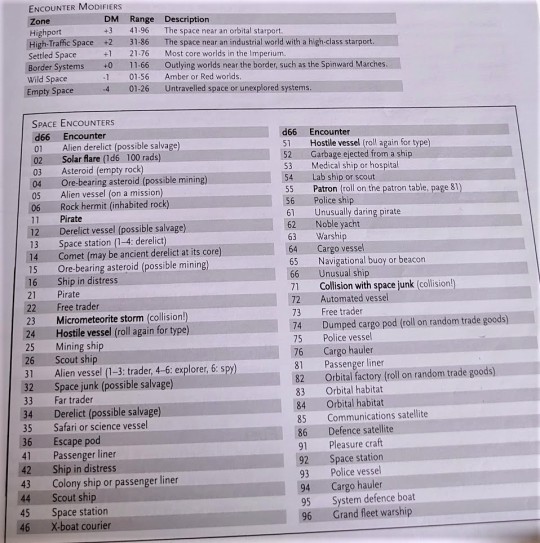
Sorry for the janky photo; I don't have the book on pdf. (Traveller Core Rulebook, 2008, p139)
This table is rolled on pretty much whenever the DM feels like it (the rules say: "roll 1d6 every week, day, or hour depending on how busy local space is. On a 6 […] roll d66 on the table below"). Many of these results tie in to subtables (any result of salvage, collision, mining, trade goods, or patron has additional rolls), but the photo above contains the most important part of the space encounter system.
Compare this table to the one from D&D's Manual of the Planes I used as an example in my series on wandering monsters:

Manual of the Planes, 2001. p. 151
Now, obviously, D&D's encounter table here is for an explicitly dangerous place—literally Hell—but the only result you can roll on the table that doesn't immediately move to combat is "72: Mercane trading mission." Thus, any time this table is rolled, there is a 99% chance of initiative being rolled.
Traveller's random encounter table marks its "unavoidable" encounters in bold (typically they're ones that immediately start a battle or some kind of dangerous phenomenon like a collision), though "patron" is also on there. There are only 7 results that are bolded this way, and only 6 of them are explicitly dangerous. Some of the non-bold rolls can result in battles as well depending on the party's actions, but there's no assumption of violence.
This is representative of most of Traveller's random encounter tables: they're not, by and large, random battle tables, but universe simulators. Depending on the context of the adventure, this means the random space encounter table could mean one of a number of different things. For example:
- If the players are pirates, this becomes a random pirate target table. Most of the results are unarmed NPC ships that would be perfect targets for piracy. However, some are police or military vessels that would cause real problems for the party.
- If the players are blue-collar miners and salvagers, this becomes a random treasure table, where the various derelict, asteroid, and salvage options become possibilities for work.
- If the players are in trouble (suffering from a medical emergency or a mechanical failure), this becomes a random rescue table, where you get to find out who answers your distress beacon, and what their intentions might be. Additionally, the tables tell you how long it takes for rescue to arrive (for example, in lightly inhabited space, you have a 1-in-6 chance every week that a spaceship shows up. At that point, you're running up against hard limitations of fuel reserves on your ship as to whether life support will give out before rescue arrives)
- If the players are simple traders, this table is a random flavour table, mostly adding a bit of flavour to the world while only occasionally having major impact on play.
"That's all well and good," you say, "but what does this have to do with tables?"
Encounters and Mortgages
Even with the bank taking most of the party's trade profit, without close attention to random encounters, the 'trade loop' can quickly turn into a 'roll dice and watch numbers grow' game. In a single iteration of the trade system, a lot of random encounters are rolled:
- A Space Encounter in the origin system while flying to the 100-diameter limit (you can't safely use Traveller's FTL drives within 100-diameters of a planet),
- A Space Encounter in the destination system while flying to the world from the 100-diameter limit (in the case of a mis-jump, which lands you far from the target world, this can use the more-dangerous less-settled options on the encounter table),
- A Legal Trouble Encounter check upon docking with the new spaceport,
- One or more Spaceport Encounter checks while in the spaceport and picking up cargo.
- One or more Random Passenger rolls if passengers are picked up
That's four or more rolls on random tables just going from one planet to another. This means that what might otherwise seem to be a straightforward (and therefore boring) trading game becomes, in practice, a series of minor adventures and close escapes full of danger. Remember, any time a pirate is encountered, there's a real possibility the players will be forced to jettison their cargo, which typically represents all of their accumulated wealth. The stakes are very high.
These high stakes also provide motivation for your players to accumulate wealth beyond simply keeping the banks off their backs: ship-scale weapon systems are very expensive (in the millions of credits), but even one or two upgrades to a basic ship can give the party a huge leg-up against non-player ships (who usually fly unmodified ships lifted directly from the book).
Encounters and Patrons
Virtually every random encounter table has a one or two entries that result in the party meeting a patron, which, as I described in the second part of this series, are the keys to adventure in Traveller. Math isn't my strong suit, but back-of-the-napkin calculations suggest that around one-in-five trips between worlds will involve a run-in with a patron, and thus the start of a classic-style adventure. Note that while the book does provide tables to generate patrons, it really isn't practical to do this on the fly. What this does mean is that, as DM, when you have a free afternoon or just a couple of hours, you can create and queue up your own patrons in advance and trust that, at some point, the game's procedural universe simulation will put them in front of the party.
Encounters and Character Creation
Traveller’s character creation system is different. So different, in fact, that it can be tempting to cut it out altogether and replace it with something conventional.
The rulebook recommends that, if possible, patrons should be drawn from the PCs' existing contacts and allies. I don't think it explicitly mentions this, but hostile encounters should also often include the PCs' existing enemies and rivals. This ties player characters' backgrounds directly into the action of the game's 'present' timeline. In addition, it's actually much easier as DM to pull out a character that you already have in your rolodex sometimes than come up with a new, characterful pirate captain for each random encounter.
Missing Legs
Unless you really know what you're doing, Traveller runs a serious risk of collapsing if any of these four legs (mortgages/trade, patrons, character creation, and random encounters) is removed or seriously modified. Unfortunately, the game doesn't make this clear in any particular way, which is why my previous DM (who, again, is very good) struggled visibly with his two campaigns.
If you decide mortgages won't be a major aspect of the game, you have to remove or severely nerf the trade rules, or your party will be rolling in cash almost immediately. Because the trade rules are the primary motivation to move around (and thus, roll random encounters), you have to come up with another reason for them to do so. (Note that it's possible, during character creation, to be loaned a Scout Ship without having to pay mortgages on it. As DM, you should consider disallowing this, or at least be aware of the implications if this reward is rolled)
If you decide trading won't be a major aspect of this game, you have to find another way for the party to make money (lots of money) or they simply won't be able to pay their mortgage. You also have to find a reason for them to travel from place to place, or they won't be able to justify the cost of fuel, crew salary, and other expenses. The game will run serious risk of defaulting to jumping from one patron job to another. This isn't inherently bad, but it's a lot of work for the DM, and, at some point, becomes a railroad of quest-to-quest with no other real alternative. You're also cutting off the party from meaningfully interacting with the spaceship upgrade system—there's pretty much no other way to raise the millions of credits needed to buy extra laser turrets and stuff for their ship.
If you decide patrons won't be a major aspect of the game, you might find that the party never leaves their spaceship. Skills other than those related to trading and spacecraft operation will never be used, most of the equipment chapter and the encounters and danger chapter will be left unread, and those wild and unique planets you spent ages generating before the campaign will go completely unnoticed.
If you decide Traveller's character creation is too unbalanced and ought to be replaced by a point-buy system, you might struggle to weave the players' contacts, rivals, allies, and enemies into the campaign (if they even have those), and you might miss out on having hired NPCs running around on the spaceship. This in turn means that there's many fewer opportunities for roleplaying during travel. Additionally, your players might then operate with the expectation that Traveller will have anything resembling game balance, and, as such, be frustrated by the game's hugely uneven random encounters.
If you decide random encounters won't be a major aspect of the game, you might find that the party never meets a patron, never has the opportunity to engage in piracy, never has any trouble watching their credits climb and climb indefinitely, and never has much motivation to make money (and thus, go on adventures and travel around) beyond paying off their mortgage.
29 notes
·
View notes
Text
In This Mad Machinery
A human and an android swap bodies, resulting in identity crises, existentialism, philosophy with the boys, and fun!
Detroit: Become Human | gen | 20k | rated T | introspective comedy/sci-fi
Chapter 7 (3k words) | [AO3 link] | [first] | < prev
- - - - - - - - - -
Even though it wasn’t something he normally did, Hank called Sumo to hop up on the couch with him. The dog hesitated before heaving himself onto the cushions, lying with his head pressed against Hank’s legs. He smiled and absently scratched his ears as he took a swig of beer. Another warning popped up on his HUD, declaring, (CAUTION: Ethyl alcohol detected. Combustion will raise core temperature by est. 0.06°F. Further consumption NOT RECOMMENDED.)
“Yeah, yeah, fuck you, too, CyberLife,” he muttered as he put the bottle back on the table and returned his attention to the TV. Information about the movie, its actors, its reviews, similar films, subtitles, alternate dubs, and everything under the sun scrolled by his vision. Instead of canceling it, though, he decided to just let it happen. Why not. He turned on English subtitles and changed the audio to Russian in his head just for the hell of it.
He was planning to just hang out for the rest of the afternoon, messing with his search function, maybe downloading a VR game or something (if he even could; surely, he wasn’t the first to think of it), but he eventually got restless. He didn’t even know androids could get restless, although it might be because of his very human attention span. Shitty movie anyway.
His countdown from earlier had continued in the background. It notified him when only an hour remained, reminding him that since the estimate varied by up to an hour, they could now switch back at any time.
Hank stood up, stretching his arms to the ceiling. It didn’t feel refreshing, and he got a notice advising against overextension. “Don’t know what I was expecting,” he said to Sumo. Sumo also stretched, taking over his spot and most of the rest of the couch.
He sounded like Connor. Which was obvious, of course he sounded like Connor, it’s Connor’s body, but he sounded exactly like him. Listening to his own body talk all day from an outside perspective made him realize that his voice wasn’t what he had always heard. According to his computer brain, he normally heard a mix of the sound of his voice and the reverberation inside his head from his vocal cords. Connor’s ears, though, canceled the reverb in order to hear his voice as the world did.
That seemed like such a minuscule thing. How was that going to make an investigative android investigate better? They could do that but not build in better taste buds?
Holy fuck, he was an android.
Throughout the day, the realization had hit him again and again, but it still never lost its potency. God, it’s like all those Eighties body swap movies with a sci-fi twist.
Hank shook his head, turned off the TV, and went into the bathroom. He held off on flicking the light switch for a moment; in the dim room, his LED cast a faint yellow glow on the walls.
The pop of the lights as they lit up heralded the illumination of his reflection. Frankly, he was surprised with himself for not looking in a mirror yet, the brief glances in the car mirrors while he was distracted by Connor’s silence notwithstanding.
Even though he fully knew what to expect, having a different reflection for the first time in ever was still jarring; ([serv].exe(26) non-responsive: rkcomp001; cebf014; cebf121; opt006; srvm338f; […]) appeared in the corner for a brief millisecond. In the mirror, his LED flickered.
The first thing he coherently thought was that his hair was messy. Not really, but compared to the immaculate state Connor normally kept it in, it looked a bit…wrong. He reached up to shape it into place, receiving another uncomfortable twitch in his head from stalled processes when the Connor in the mirror copied him. Combing his hair back, it seemed to fall into place more easily than he expected. What was android hair even made of? (Translucent fiber optic – silica-fiber nylon composite) After critiquing his image, he even pulled that one tuft of hair loose to hang over his forehead.
He should be feeling something more. Running a hand down his cheek and barely moving the skin, noting that having darker eyes made them look bigger, entranced by some morbid curiosity, his stomach should be doing somersaults, goosebumps prickling his skin, something. But the most that happened was a twitch of a servo, a slight hiccup in the data running through his thoughts.
Hank frowned. It wasn’t technically a look of disgust, but it was still the most disgruntled that Connor had ever looked.
He was not comfortable with how indifferent he was feeling. He hadn’t felt this apathetic since….
“Shit, kid,” he said, stepping back from the mirror and crossing his arms. “No wonder you all flipped out when you started feeling things.”
His LED flickered to red, at which point Hank turned off the lights and left. It was beginning to mess with his head too much, much more than he was prepared to handle in a body that couldn’t get drunk.
The bedroom door was half-open. He considered checking on Connor but immediately dismissed the idea; he’d had enough of out-of-body-induced vertigo for one day.
The sun was starting to dip in the sky, casting a warm gold through the windows. Sumo slept sprawled out on the couch, as content as a dog could be. Hank smiled at the peaceful sight as he brought the beers into the kitchen. It was cozy. Maybe he should take a nap, too. Nothing much else to do at the moment. Androids don’t sleep, though.
Enter low-power mode?
Yes No
“Huh. Maybe.”
Inconclusive response
Yes No
“Fuck you.” Despite himself, he chuckled. What was he doing. Why was he a robot. It’s pure science fiction.
Setting the bottles on the counter, he noticed a coin lying on the corner (US quarter, 0.25USD – mint 2020). One of Connor’s, probably. One that he does tricks with to calibrate. He had always wondered how and why that was.
He palmed the quarter as he returned to the living room and settled in the recliner. His thumb flicked it into the air a few times as a test. It was something he could normally do, something simple, but it initiated a predictive program. The coin’s path was highlighted, his hand moving slightly out of his control in ordered to follow through with the catch. Hank didn’t thoroughly enjoy that part.
Rolling the coin over his knuckles, a (Calibration complete) popped up on the HUD. Nonetheless, he flicked it to the left, deftly catching it with his other hand. Back and forth, increasing in speed as he went, Hank almost laughed at how easy it was. It’s just simple physics to a computer brain, and what it lacked in emotional everything, it surely tried to make up for in physics.
He caught the quarter between two fingers. He nodded. “Neat.”
He tossed it onto the coffee table, it landing exactly where his HUD had circled, and turned on low-power mode with a thought. Responses from his senses slowed, the already-quiet room somehow becoming quieter, the colors dulling and shifting to warmer tones. It was like a dream state, a conjecture that was only reinforced by the slightest delay in motor functions.
This ain’t so bad, he thought, kicking up the footrest on the recliner and crossing his arms. Computer-induced chillness. Some music would make for a perfect relaxed evening, especially after the unexpectedly-disorienting day he’d had. Did androids’ search function work for music, too?
It sure as shit did. A widget opened from the left with a search bar and a list of example queries. He was connected to loads of free databases (with others available after signing in with your user information), allowing for searches by song title, album, year, genre, BPM, producer—the whole nine yards.
How ‘bout an album, he decided, and the search restriction applied. Something Eighties or Nineties, both from his childhood and the dwindling end of the golden age of music. In English or without lyrics, maybe something at least platinum. Something that would be a nice complement or conclusion to the day.
At that last thought, the current list of (many) results was replaced by a spinning wheel. He felt something running in his head alongside the search, and after a few seconds, the key words Science fiction, Technology, Saudade, and Family appeared. Hank was thrown for a loop wondering if he should take that as an invasion of privacy when the results came back with only two albums, listed in order of release. Somewhat impressed at its efficiency, he selected the first, hoping to keep it quiet enough to not wake Connor. (External sound system MUTED)
…or that worked, too.
A rhythm of low, imposing notes (F♯) introduced a song he had heard before. Good song. He leaned back and turned his gaze to the soft pale orange ceiling, playback controls and scrubber bar superimposed over the bottom.
This certainly was quite the day.
Did he regret it? Absolutely not. He’d had a field day with his new tech, like the world was at his fingertips, and Connor uncovered some leads to help him figure out his life. Did he regret that it had to end? Also a ‘hell no.’ It was neat and all, but he was better suited for human life and the more leisurely, contained existence it yielded. Visiting android life was fun for a vacation, not something he’d want to make permanent. Like Florida.
He snickered. If only Hank from a year ago could see him now. What an obstinate bastard he was.
As the fourth song was ending, it stuttered, his limbs clicking lightly as they locked. (Transfer requested by 313248317_53. Initiating in 5s.)
And that was that. Shame he couldn’t get through the rest of the album. He’d have to find it when he—
- - - - - - - - - -
Rebooting…
Nexus-7 detected; terminating VM…
Initializing 313248317_53…
Systems check complete: 100% – Fully functional
Network online ID: ************ Lisc: *************** Credentials validated
Resuming suspended programs…
Previous state: low-power Restart in low-power mode?
Yes [No]
Resuming
Connor blinked.
He was looking at the plaster ceiling of Hank’s living room, lying 61° from vertical in one of the chairs (ceiling position indicates RECLINER). His clock announced that it was 7:48:11.2 PM GMT-5 and that he had gone offline due to a complete data transfer initiated thirty-five seconds ago. (CORRECTION: RK800 went offline, running [unknown] prior to 313248317_53)
A drumbeat sounded, fading in on a crescendo. He noted the playback overlay on his HUD which indicated the music came from his own systems. It had resumed from its stopping place before the reset; must’ve been Hank’s doing. He paused the song.
He felt compelled by narrative trends to take a breath to indicate contentment with the end of a journey and/or hardship. It only alleviated slight stress on internal cooling systems. All was back as it’s always been.
A long, boisterous yawn sounded from the hallway. Hank shuffled in, rubbing his eyes with the back of his hand. “Well, that was weird,” he stated. “I was awake, then cut right to waking up without any of the ‘sleep’ part in between.”
“Welcome back, Lieutenant.” Connor couldn’t help but smile at the fact that he could look at Hank and see normal, long-haired, perpetually-tired, human Hank. It felt more natural that way.
“Back to some peace and quiet in my own head.” Sumo picked his head up enough to glance at the two of them before stretching and nuzzling into the cushions anew. Hank sat on the arm of the couch, running his thumb over Sumo’s paw. “How're you? Everything left in working order?”
A notice reminded him of his system status retrieved a few minutes ago (100%) and asked if he still requested another scan. He declined. “Yes. And you? Feeling okay?”
“Feeling rested and ready to go. So.” Hank raised an eyebrow. “Do androids dream of electric sheep?”
“The question still stands as to whether I was an android when I was in your body—”
“And we’ll nitpick shit tomorrow. Just answer the question.”
“Sorry to disappoint you, Lieutenant, but I don’t think I did.” He had some difficulty remembering the last hour, like the memory was missing frames and full of artifacts. “I’m pretty sure you asked me this earlier after I couldn’t sleep and came back in here, remember? We went back to watching TV before your girlfriend walked in with Sumo and his puppies—wait.” His processor stuttered; the memory didn’t fit in with the rest of the timeline. Hank didn’t have a girlfriend.
Hank wore a shit-eating grin. “Sounds like a dream, there, kiddo.”
“I….” Time was linear from a single perspective, with only a single degree of freedom along any timeline. Where should this anomalous memory be stored if not in sequence? It was almost paradoxical to the very function of system memory. He blinked. “What am I supposed to do with this information?”
“Do with it? Back to being an android for like five minutes and you’ve already got your mood ring in a frenzy.”
“I can’t help it! It contradicts my systems! I understand dreams are the vague recollection of subconscious imagination, but I wasn’t designed to accommodate for… I wasn’t….” Something clicked—yes, an electromechanical relay in his head, but more importantly, something figurative. He blinked and looked away, at some space above the coffee table. “I wasn’t designed for anything,” he realized. “I understand what a dream entails. I understand the concept fine. It’s CyberLife’s programming that can’t parse it, that—that can’t allocate it.”
He heard Hank shift on the armrest. “Get it now?”
“I….” He had found a disconnect. It was like he had deviated from his machinery instead of just his programming. Living as a human was something he had experienced but was incompatible to an android system. “I’m going to need some time to think things through,” he said when the silence grew too long, “but maybe.”
“Well, congrats.” Sumo stretched again, this time curling up and freeing a cushion for Hank. “Sounds like today’s been a success. Mission complete.”
‘MISSION COMPLETE’ recognized as termination command – Forward file ‘blbxcomp.exe’ to CYBERLIFE?
Yes No
“Oh, Lieutenant, the black box recorder!” Connor, after selecting [No], pulled up file details to keep him focused on the new topic; it took him a split second to remember he could multitask again, but he didn’t particularly want to run philosophical introspection in the background. “Should I send it now, or…? Markus pointed out that they may not like that we told him about it….”
Hank leaned back, stifling another yawn. “True. Or we can give them a classic ‘fuck you’ and claim that we were already doing more than enough for them, we can talk to whoever the fuck we want.”
He must’ve noticed the unconvinced, uncertain frown on Connor’s face because after a moment, he crossed his arms and rolled his head onto the couch back, a deliberately-bored gaze directed at the ceiling. “Or,” he suggested. “Or. We just don’t tell them.”
Connor’s frown deepened. “That doesn’t sound very fair. We were given the chance to do this on a quid pro quo basis.”
“We don’t tell them now.”
He blinked. “Lieutenant, I can’t edit an executable file like their recorder without intense effort and noticeable signs of tampering.”
Hank hummed. “I mean, it was sent in an email, right? So, you could just redownload a fresh one and record it again some other day.”
“But to record it again, we’d have to switch again.”
“Mm-hmmm.”
“But—but Lieutenant—”
“Fuck, kid, I dunno, it’s just an option! But you don’t always have to question everything! Maybe someday, you’ll just want a break from the whole android thing for a bit. I know the human life can get kinda boring every now and then. Something to mix things up. It is an option now, though.”
“Lieutenant, I—”
“And we don’t have to fuckin’ Vice Versa tomorrow! Could be the next day, could be next week, probably should be soonish so CyberLife doesn’t get suspicious—although now that I think of it, they probably saw the transfer over their network, so sooner rather than soonish so they don’t start harassing us.”
“I—” Connor stopped, processor stuttering. He took his time thinking through the conversation and coming to terms with Hank’s suggestion that they switch lives recreationally just to “mix things up.” It only took 0.82 seconds. After reviewing the concrete, he considered his own feelings.
And he found that he thought he would like that.
“Yeah,” he agreed. “Yes, that should work just fine.” Then he added, “But Captain Fowler said not to be in the wrong bodies at work on Monday.”
An unexpected snort was a harbinger of a fit of laughter, Hank slapping a hand on his knee and doubling over. Sumo startled awake, perking his ears at his owner. His hysterics turned to coughs, almost hacking up a lung trying to snicker at the same time. “Fuckin’-A right, he would! Shit—” he coughed, “—alright, I need a beer, now that I’m not at risk of fuckin’ combustion.”
“Of course.” Connor smiled. His android chassis didn’t feel compelled to join in on the contagion of human laughter, but now he could remember what it felt like. It was comfortable. Warm. Homely. A good end to a complicated day.
After Hank had caught his breath, he pushed himself up and stretched his back. “God, my calves are going to be sore tomorrow,” he groaned. “Maybe I should make you deal with it since it’s from your damn half-marathon this morning.”
“I suppose that would be fair. But I wouldn’t necessarily enjoy that.”
“Well, maybe that’s what you deserve.” Hank’s persisting grin denoted he didn’t really mean it. “Now. Beer. Maybe have the rest of Bel’s ambrosia of the gods in a bit, though I think you left it in the car.”
Connor checked his memory, appreciating how perfect it was compared to the human equivalent. “Yes, it appears that I did. My bad. I was a bit distracted.”
“‘s fine. It’s fine there a bit longer; the thieves of Detroit aren’t that desperate yet.” He walked to the kitchen, calling over his shoulder, “Hey, if you wouldn’t mind, d’ya think you could play the rest of that album? You’d probably like it, too. Can keep it on as a soundtrack to some Saturday night games.”
“Sure.” Turning on external speakers, Connor hit play, bringing the scrubber out of suspension. The crescendo culminated in a couple cymbal crashes, the drums prominent, the guitar with the slightest reverb. (1982 – 112 BPM – Further information?)
He declined. He didn’t need every scrap of information. Folding his hands in his lap, watching Hank take a sip from one of the open beers, look at it, then dig for a new chilled one from the fridge, he felt like just being in the present. Just being in the room instead of in his circuitry. A content smile pulled at his lips as the vocals began to ring through his head, lyrics written decades before, oblivious to his existence.
Nothing to fear but fear itself
Not pain or failure, not fatal tragedy
Not the faulty units in this mad machinery
Not the broken contacts in emotional chemistry
#couldn't think of a better ending so kinda fell into songfic territory there at the end#it's this fic's namesake!#The Weapon by Rush#Detroit Become Human#Connor RK800#Hank Anderson#body swap#DBH#DBH fanfiction#my writing
25 notes
·
View notes
Text
RPG Highlights: Shadowrun

Ah, Shadowrun. I have a lot of complicated feelings about Shadowrun. This one might be is a bit rambly. Shout out to the anonymous suggestion for this one.
So, first off, I’ve mostly played 5th edition with some slight dabbling in 4th. So those editions are what informs my opinions on Shadowrun.
What Is It: Shadowrun is a d6 dice pool, skill-based, fantasy cyberpunk/corporate dystopia rpg. You can play an ork decker (hacker). Or an elf marital adept. Or a chromed up street sam(urai). Get hired as corporate disposable assets, but a shit ton of gear, and go cause a ruckus.
The Sixth World (the world of SR) is, easily, one of my all time favorite rpg settings. For those not familiar, SR is a fantasy cyberpunk. The long and short of it is that in 2012, magic came back into our world (though the timelines between the real world and that of SR split a bit earlier than that, mostly concerning the rise of megacorporations). It’s very fun to just, get lost in the SR wikis or peruse the more setting focused books (which is all of them really). Everything you’d expect from modern cyberpunk you can find in SR. Now just add fantasy. Magic, orks, elves, overpowered mages, etc, etc. (There’s arguments to be made that, the “punk” part of a lot of current cyberpunk products is kind of lost, and its more of a “corporate dystopia”, but there are better informed people out there who can write a lot better on that than me. Minimum, SR contains at least the aesthetic you’d be looking for in cyberpunk)
At one point, an actual dragon was the president of the “US” (technically UCAS if I’m remembering my lore correctly, but you get the idea). It’s a blast. That being said, there is some, problematic writing. Again, I’m not the expert on this, but you will probably come across some stuff that leaves a sour taste in your mouth One major examples is how the game mechanically deals with cybernetic augments. The more chrome you pick up, the less Essence you have. In-lore, Essence is more or less described as one’s “humanity” or connection to the earth/world. The lower your Essence, the less “magical” you are. If you get too much chrome, you can go full “cyberzombie”. So, from a pure gameplay mechanic, I get it. You need to balance cybernetics with magic otherwise you’d have chromed up mages running around and it would probably be a mess. But it’s, kinda messed up that if you want just a regular not-fancy prosthetic leg you have to mechanically lose some of your humanity.
There’s a few other bits and pieces of lore writing that is also not super great, but I also don’t have any of them on hand, so just kind of a warning. There’s a tone of cool stuff in SR but be prepared to come across some not as cool parts.
Playing The Game: Okay, so moving on to the mechanics as I understand them. And I am by no means an expert.
At it’s core, SR is a pretty simple classless d6 dice pool. You make skill/action rolls which are based off the points you have in an attribute plus the points you have in a skill. It can be remarkably flexible. I honestly like this core.
On top of that, when you build a character you have a massive pool of positive and negative traits to play with. You can make very unique characters, and a lot of them. I mentioned classless but there are some general archetypes you can build toward, like mage, adept, street sam, decker, and others.
Where things can get messy is where the more, “simulationist” begins to come into play. So, your character is just as much defined by the gear they have as the skills they possess. Gear is very important mechanically. And it’s also once you start to get into gear (and to an extent the pos/neg traits) that you begin to run into a lot of the situational modifiers that makes SR difficult to learn. There are rules for, a lot of things. Rules for different bullet types, firing mechanisms, explosive calculations, magical strain, summonings, astral projects, falling, jumping, skydiving, basically an entirely different game for decking (hacking), and more.
This sort of style suits some people! If you love to optimize and get really granular, there’s a ton to work with here! But for me, this is where the game starts to break down. Just personal taste.
All the extra rules and exceptions is also where mechanically, the game can start to feel kind of broken. In my experience, mages are overpowered, with adepts being even more overpowered. I never really look for a perfectly balanced game (if such a thing is even possible), but it can get out of hand in SR, again at least in my experience.
The RAW intended “core loop” of SR (if that idea can be applied to ttrpgs) is basically, get a job, do the job, try not to die, get paid (hopefully), buy knew gear and repeat for as long as you’re having fun. And let me be clear, you can easily have a blast in SR. I had fun, even with all my personal issues with the mechanics. Just keep in mind what kind of game it is if you’re thinking of picking it up. There is also Shadowrun: Anarchy, which is billed as a more rules-lite and narrative focused version of SR, but I’ve only barely skimmed it so I can’t offer much on it.
Production Values: So, the SR books look nice. Plenty of nice art, interesting layouts, packed full of lore and world information. They’re nice to read like a book. Where they utterly fail is a game tool and resource. The books are riddled with errors requiring pages of errata, are horribly, unintuitively organized, and occasionally hide rules and mechanics in little sidebars. You will be flipping through the books a lot when making a character. The whole book. Hope you’ve picked up a character builder too.
Why You Should Play It: The cyberpunk base provides a unique foundation for telling stories. Cyberpunk can be a lot of fun to explore, the addition of fantasy just helps set SR apart from other cyberpunk products. But you can also just put on some mirror shades, straighten up your pink mohawk and have some wild adventures if all you’re looking for is explosions and action. That’s totally cool too.
End of the day, SR is worth checking out. It will require some effort, Catalyst Labs doesn’t make it easy. And it may not be the system for you. But the setting can carry it pretty far. Also, I recommend checking out the podcast Neoscum if you want an actual play example. It’s on the zanier (pink mohawk) side of things, but it is seriously great, and an equally great examples of what you can do with SR.
Where You Can Get It: Various editions of Shadowun, including the most recent sixth edition are available on DriveThruRPG and Catalyst’s website.
9 notes
·
View notes
Text
Download PUBG game for PC for free Download PUBG
تحميل لعبة ببجي للكمبيوتر 2020
Download the game PUBG for the computer, a game called PUBG or PUBG or PUBG as many searches for it PUBG and in English PLAYER UNKNOWN'S BATTLEGROUNDS which sparked uproar since its release in late 2017 and which is one of the games flammable in the sense that immediately after its release it won millions and millions of downloads and became the audience of social media sites From YouTube, Facebook, and the TWITCH platform they only talk about it, meaning that it has become the talk of the world in a very short period and attracted all young people to it. Download the game PUBG for the computer of the type of survival games for the better, meaning you and a group of players consisting of 100 players. T at the beginning of the year 2018 became the game available on all devices starting from the PC and PlayStation and Xbox and Android phones and iPhone and in the lines coming you will learn more about the game and how to play and everything in detail as we brought you explain how to download and Play it on the free computer.
Download PUBG game for PC : تحميل لعبة ببجي للكمبيوتر
تحميل لعبة ببجي للكمبيوتر About PUBG game for PC PUBG Game (Player Anyones Battle Grounds) is a game developed and produced by PUBG Corporation, where it started its first version on December 20, 2017 for Windows, then moved to Xbox One, and then in the beginning of 2018 it released two versions of mobile phones for both iPhone and Android And the game on phones is not much different from the computer with the same design, shape, idea of the game and lands, and everything just differs on the mobile graphics a little and the idea of the game revolves around a new playing system called Battleground or last man standing, i.e. staying for the last person or another team, whoever loses leaves the game and begins a new role It is very special and pubg game free download for pc Easy.
www.mfooka.com
PUBG PUBG for PC When you enter the game, you define your personality by choosing it in terms of determining gender, skin color, hair, and features. After entering the first gym in the game, you specify if you want to play individually, i.e. solo or with teams, i.e. squad, after that identification you move to The readiness zone Here, 100 people are gathered, and they are the number of players in the match, to prepare them and collect them before starting after which the battle begins since you get off the plane and you determine the landing place to search for the appropriate weapons and start the battle to become the last person left alive.
How to play PUBG In this part, we will explain everything step-by-step from the start of downloading the pubg game to the computer with a direct link until you go to the battlefield and how to become the last person alive to become before downloading the game you have sufficient information about it so that it does not take a long time to learn and understand it and we have provided you all of this in This is the information we will give you through our long experience in pubg pc game
Select the game mode There is more than one position in the PUBG game, which is playing alone or playing with a group of friends, or makes a random selection in return, in addition, you specify if you want to play against people individually or against a group, and this is up to you, but it is better to start playing in the team or group mode SQUAD This is because it is easy to help you when you die and bring you back to life again because every person who is short of blood does not die if he has a team that keeps him alive for a period of time in an attempt to bring him back from someone with him in the team because the person who killed him did not complete his elimination.
Determine where to get off Download the PUBG game for the computer for free, which is where all the players are collected in a plane that runs straight around the entire map randomly, which is a large map that contains many places and suburbs and everything you need to specify the place you want to go down and jump but be careful and jump In a place where not many people are present to collect weapons and equipment quickly and then chase down the enemies so that you are not killed at the beginning of the game and your Rank points decrease.
Image when riding the plane to determine the place to get off Image when riding the plane to determine the place to get off Weapons in the game The number of weapons in the game is 21 weapons and the number of additions is 38 addition, which makes the weapon fixed with you during aiming and hitting, including from the treasury that bears a number of shots greater and there are shields of protection and helmets that increase your blood and there is also in the game first aid which increases your blood if I was injured, and the types of weapons differ between machine guns, snipers, pistols, and single-shot weapons such as SHOTGUN, and each weapon has use in the game, it is preferred to use machine guns to target people near and medium-sized and the use of snipers for distant targets because one shot of them may end the enemy's life completely There are also backup weapons like a knife and a frying pan, etc. You can use them when a person appears in front of you at the beginning of the gym and you did not find any of the weapons except this frying pan so you can eliminate it with it.
Read also: The most powerful weapon in the PUBG game
AKM weapon in PUBG game Duration of the gym The duration of the gym does not exceed 30 minutes often due to the game system that reduces the combat zone and forces you to move to a smaller area to meet the rest of the players to the point that at the end of the gym the map size reaches 1 * 1 meter and if you do not escape from the place that was reduced it is a decrease in your blood level until your life ends Completely you should pay attention in the event that a notice appears that the area you are in will be shrunk and you have to move to the safe area which is called SAFE ZONE.
Sound and map in the game The sound is the most important factor in the game in the sense that you can locate the enemy and his steps through the sound and also the map in the case of striking shots in the neighborhood you are alerted in the map that there is a person who strikes the fire around you and in the case of this person near you is also alerted through the map by Draw feet on it, but it is not clear where exactly it is located.
Money and currencies Money, currencies and gold do not affect the game nor
Money, coins and gold do not affect the game and do not give you preference. All you can do with it is to change your personality or buy some clothes found in stores such as shoes, shirts, and pants. You can also buy them with luck boxes. This contains many clothes inside and you have one piece that is chosen for you randomly ( And you are your luck.
Red Zone bombing area Maybe you will not be lucky if the area you are in is the shelling area or RED ZONE, it appears randomly on the map in different places of the game and the area is bombed with many missiles and if only one missile hits you, you will be eliminated if your area is an ally of luck you have to run quickly Either get out of this area or take cover in any neighboring house until this bombing ends.
A picture from the Red Zone bombing area A picture from the Red Zone bombing area New models In the recent period, a lot of new items and places have been added to the game, including War Mode, which is a choice of uniforms and uniform weapons for the team, and it starts playing with a certain number of the team, and the most team gets points (by killing or helping your friends) and reaches To the number of 100 points in terms of the team, he wins this mod, which is very fun, and you can play with your friends collectively, and there is also a new mod that is called Mini Map, and you go down with 100 people in the pubg game for computers and mobile phones, and it is in a place Small selector and you start to win and it is harder than regular mode.
Video explanation of downloading and playing PUBG for PC We also return to you that we provide the best useful explanations and videos from the site so that you can download and play the games you want with ease, in this video we explain simply how to download a game for the computer easily and run the game in front of you immediately and if you have a problem in the game or a problem in running Any program can leave your comment, whether it is here or on the site, and we will reply to you as soon.
PUBG requirements Recommended operating requirements
Operating system: 64-bit Windows 10 Processor: AMD Ryzen 5-1600 / Intel Core i5-7600K Memory: 8 GB RAM Graphics: Nvidia GTX 1060 6GB or better Lowest operating requirements
Operating system: 64-bit Windows 7, Windows 8.1, Windows 10 Processor: Intel Core i3-4340 / AMD FX-6300 Memory: 6 GB RAM Graphics: Nvidia GeForce GTX 660 2GB / AMD Radeon HD 7850 2GB DirectX: Ver 11 Network: Broadband Internet connection Storage: 30 GB available space Download PUBG PC for PC Download the webpage link from Game Loop Download PUBG For PC for PC New link from GameLoop After clicking on the previous link to download a game for the computer, the official website page opens with you, click the Download button as shown in the picture
Download Pidgy for the computer Open the link above and click Download Download a webpage from the MediaFire website
https://www.mfooka.com/
1 note
·
View note